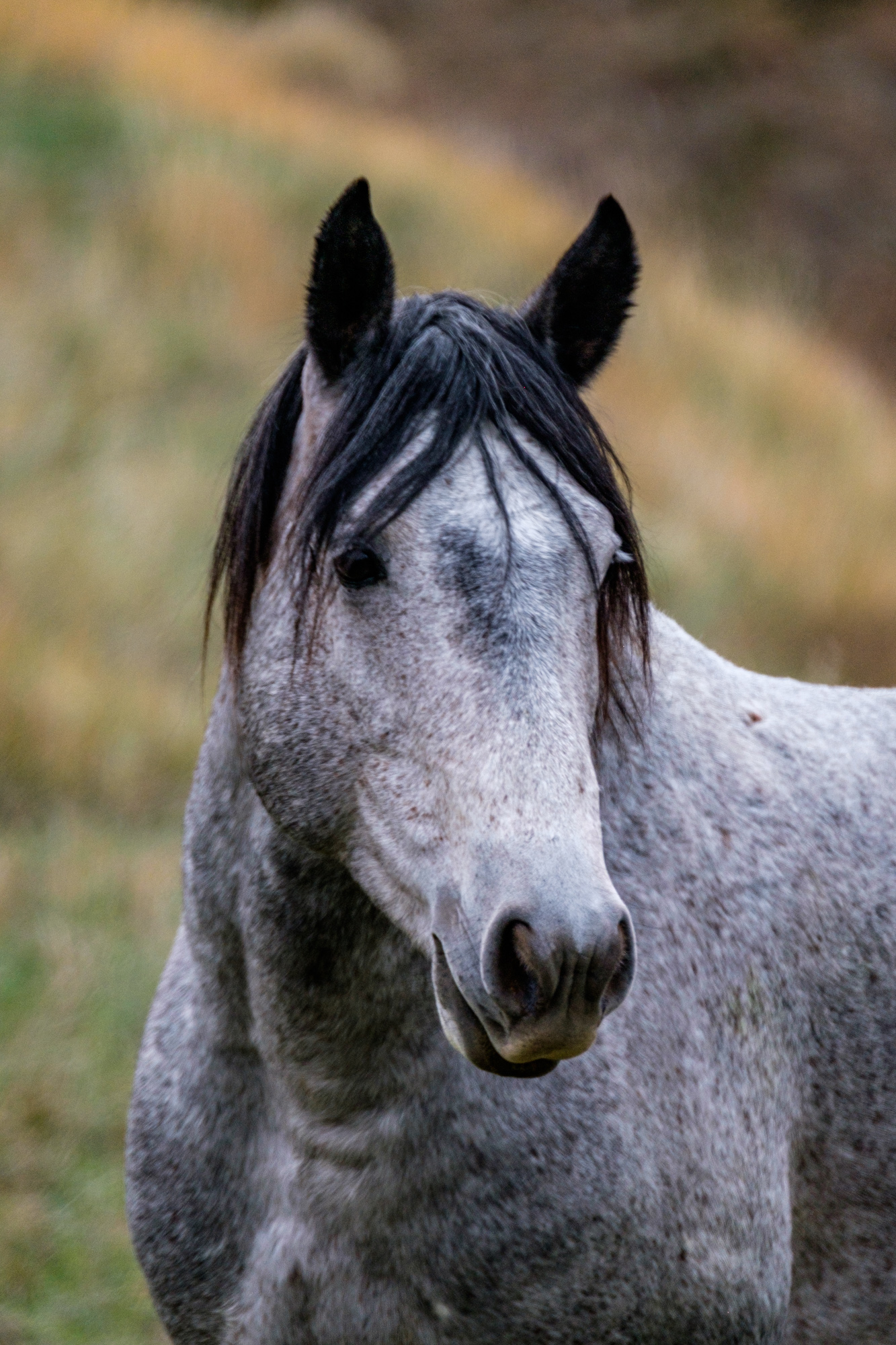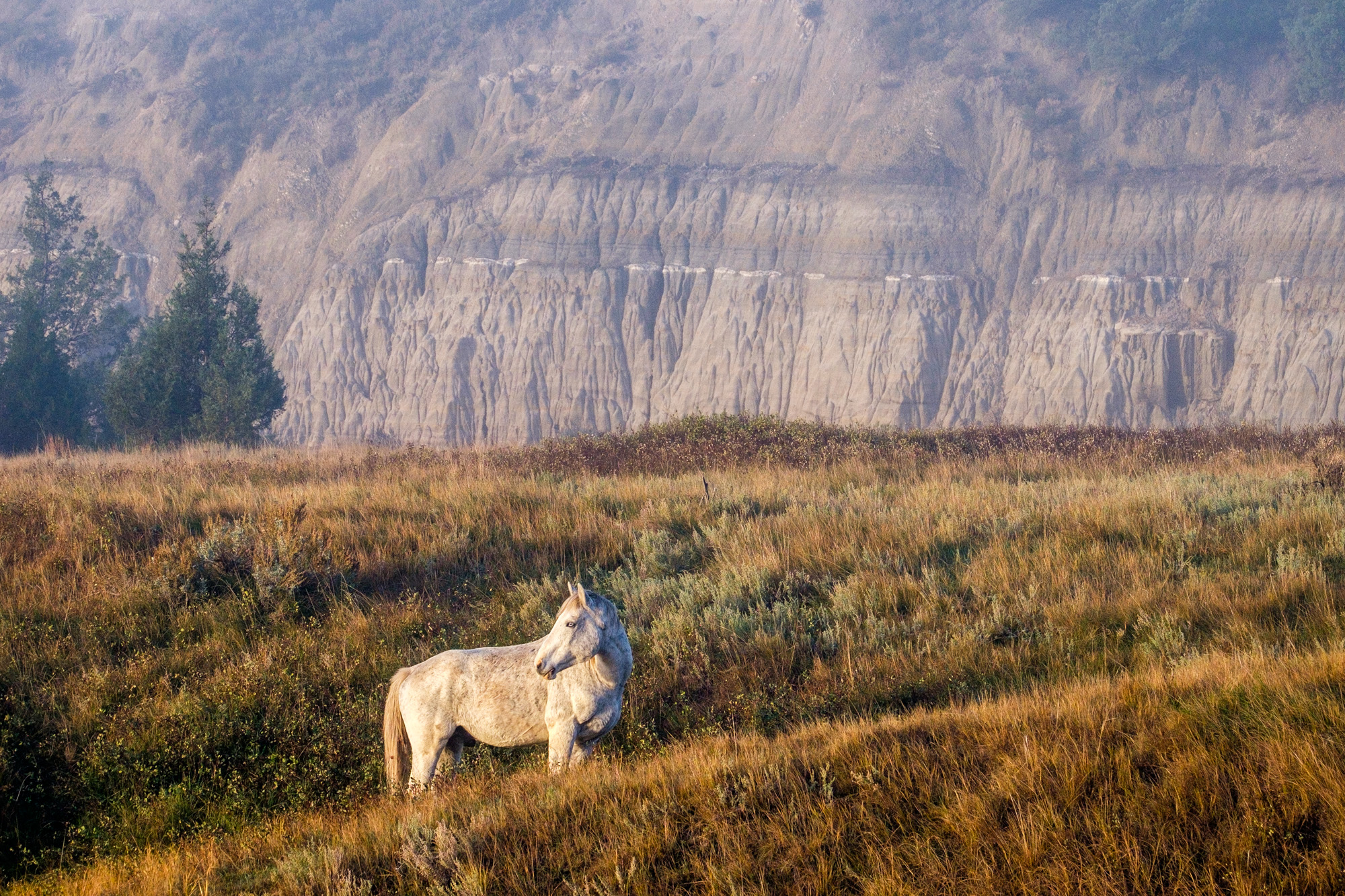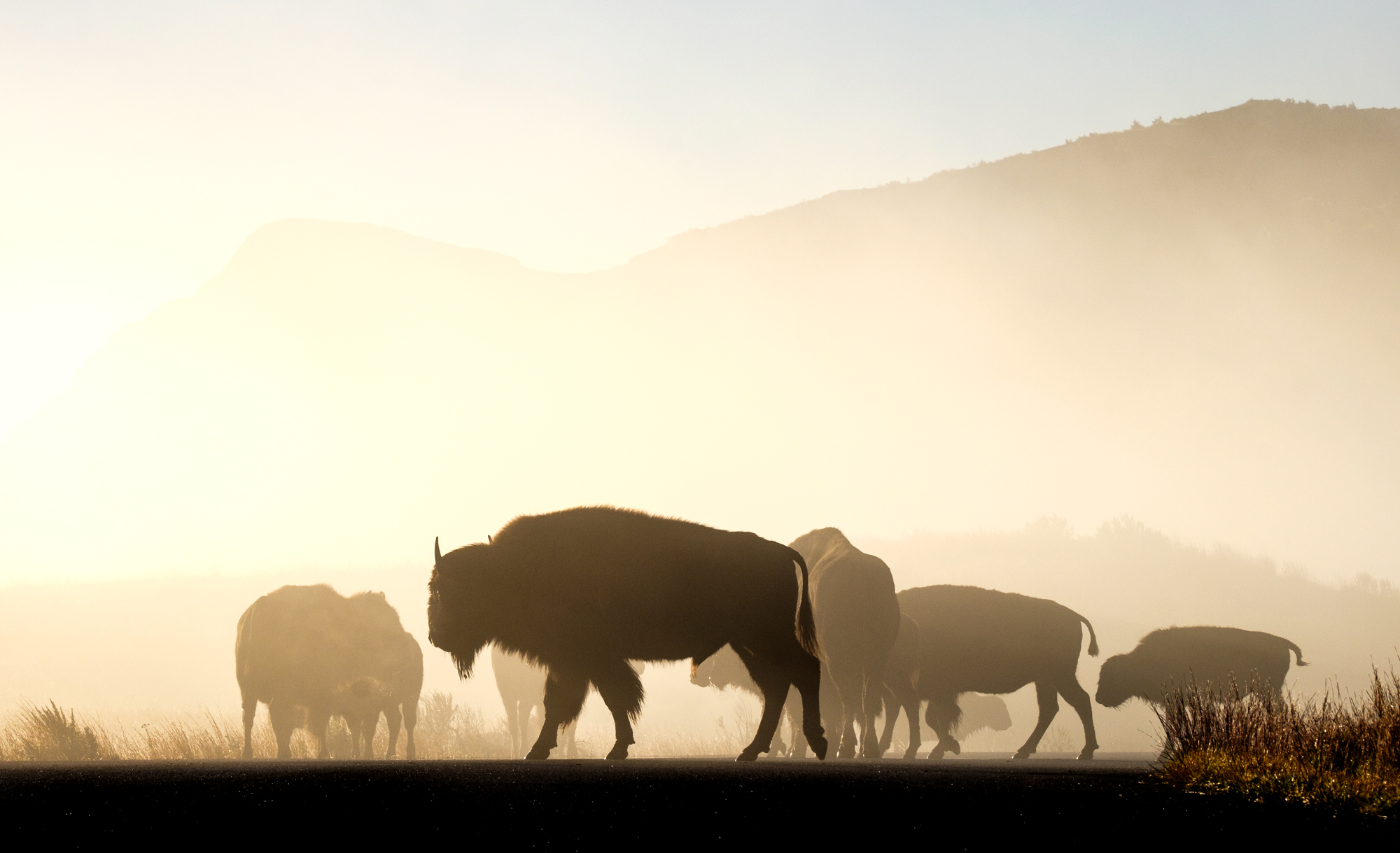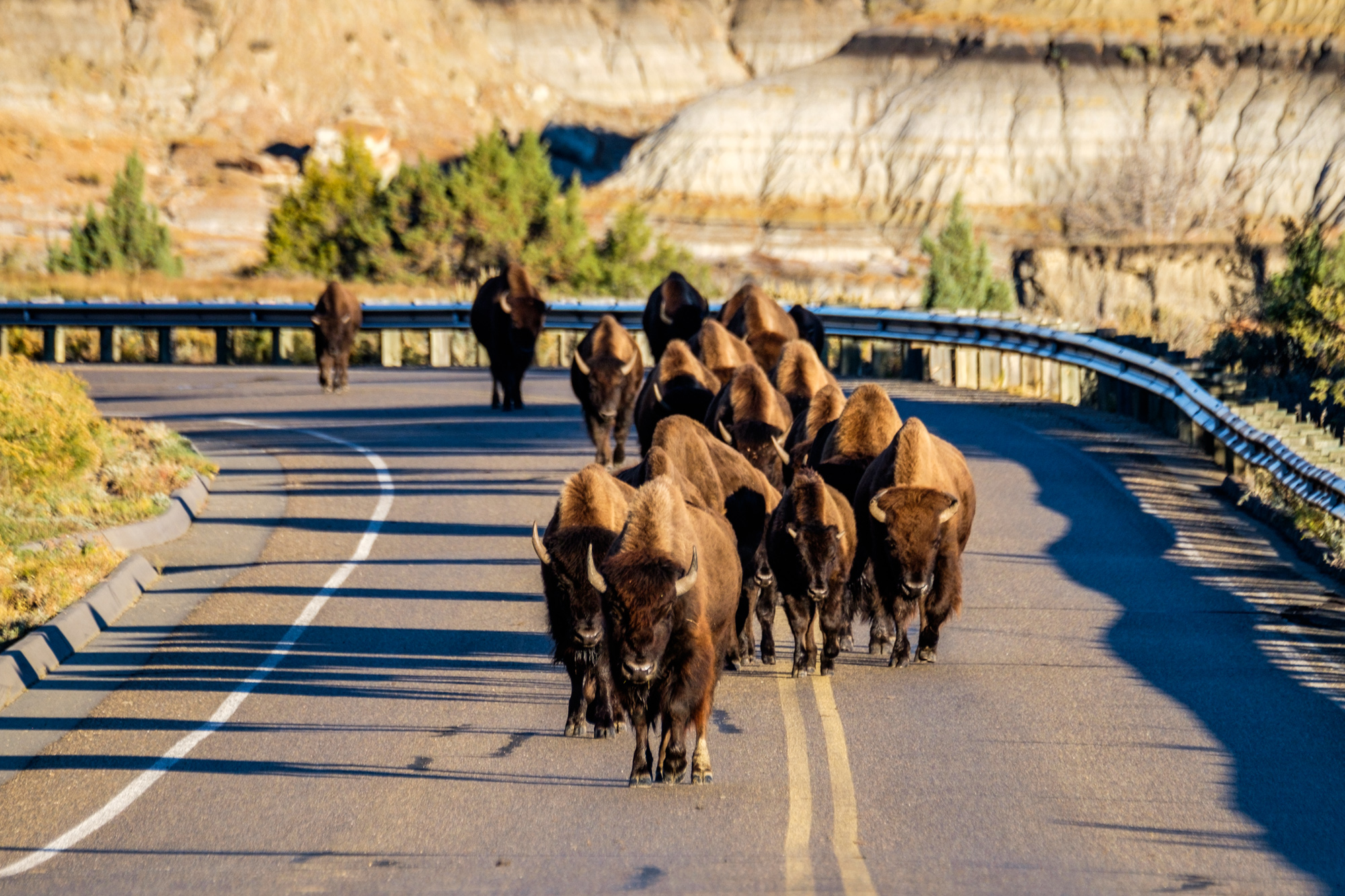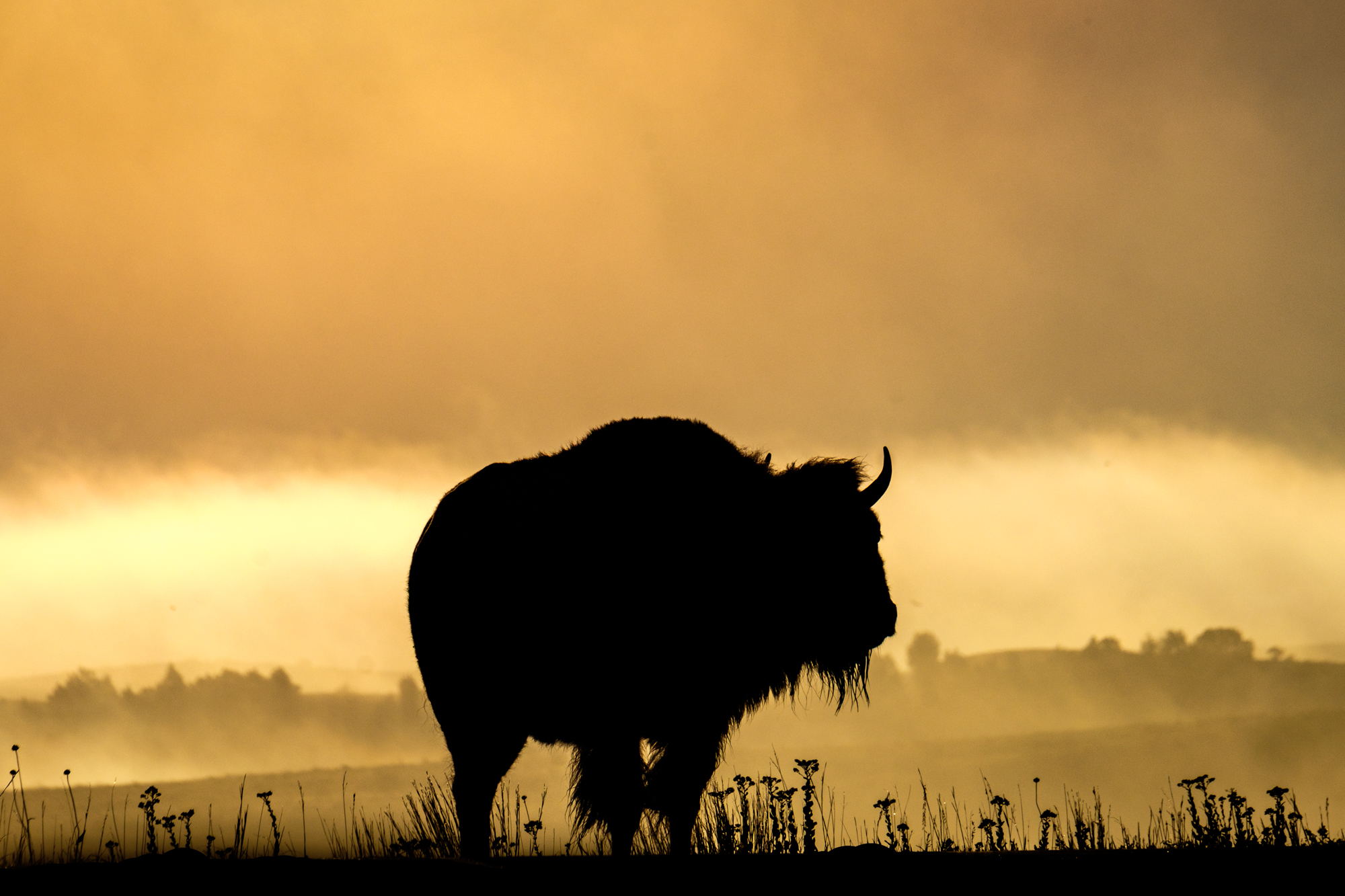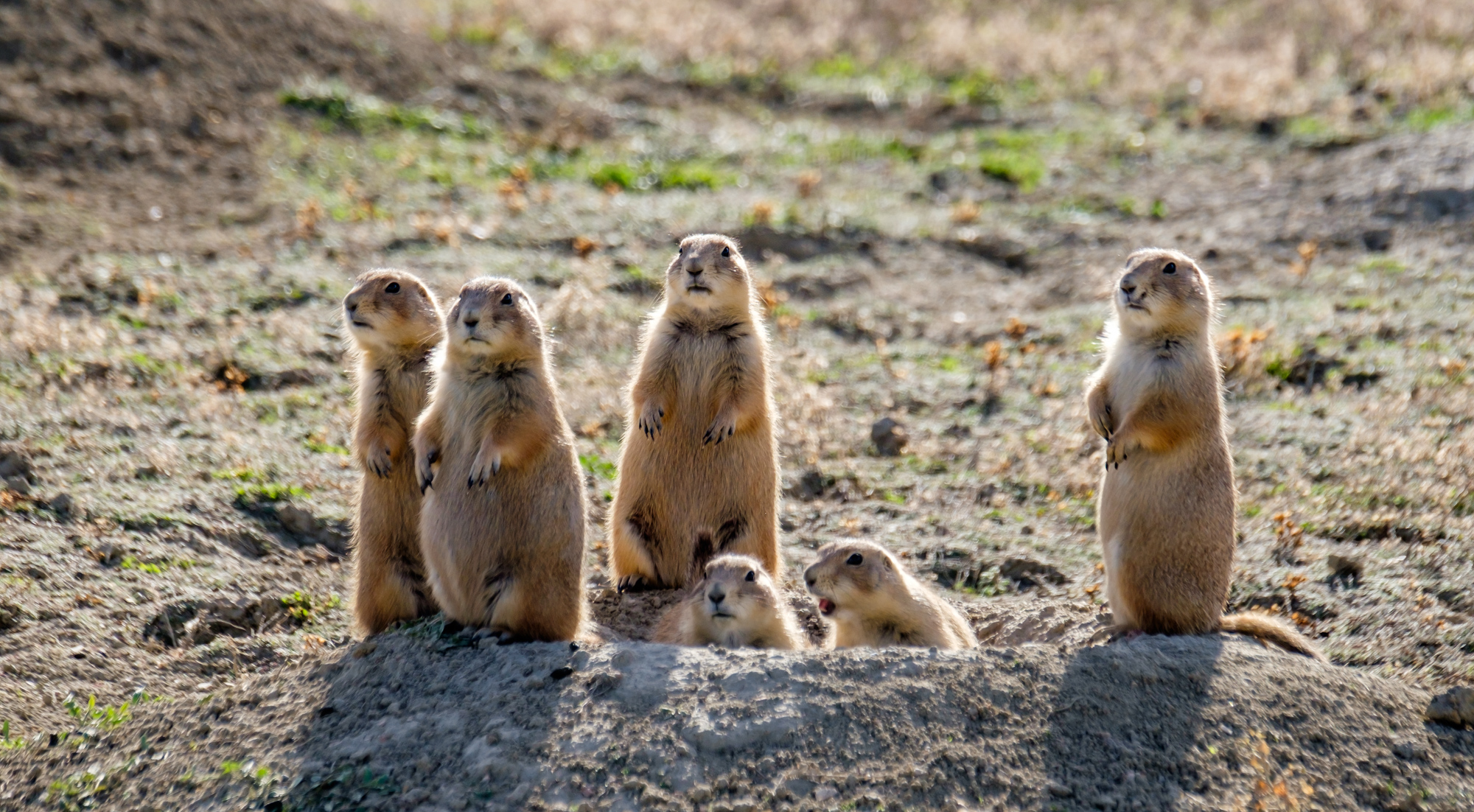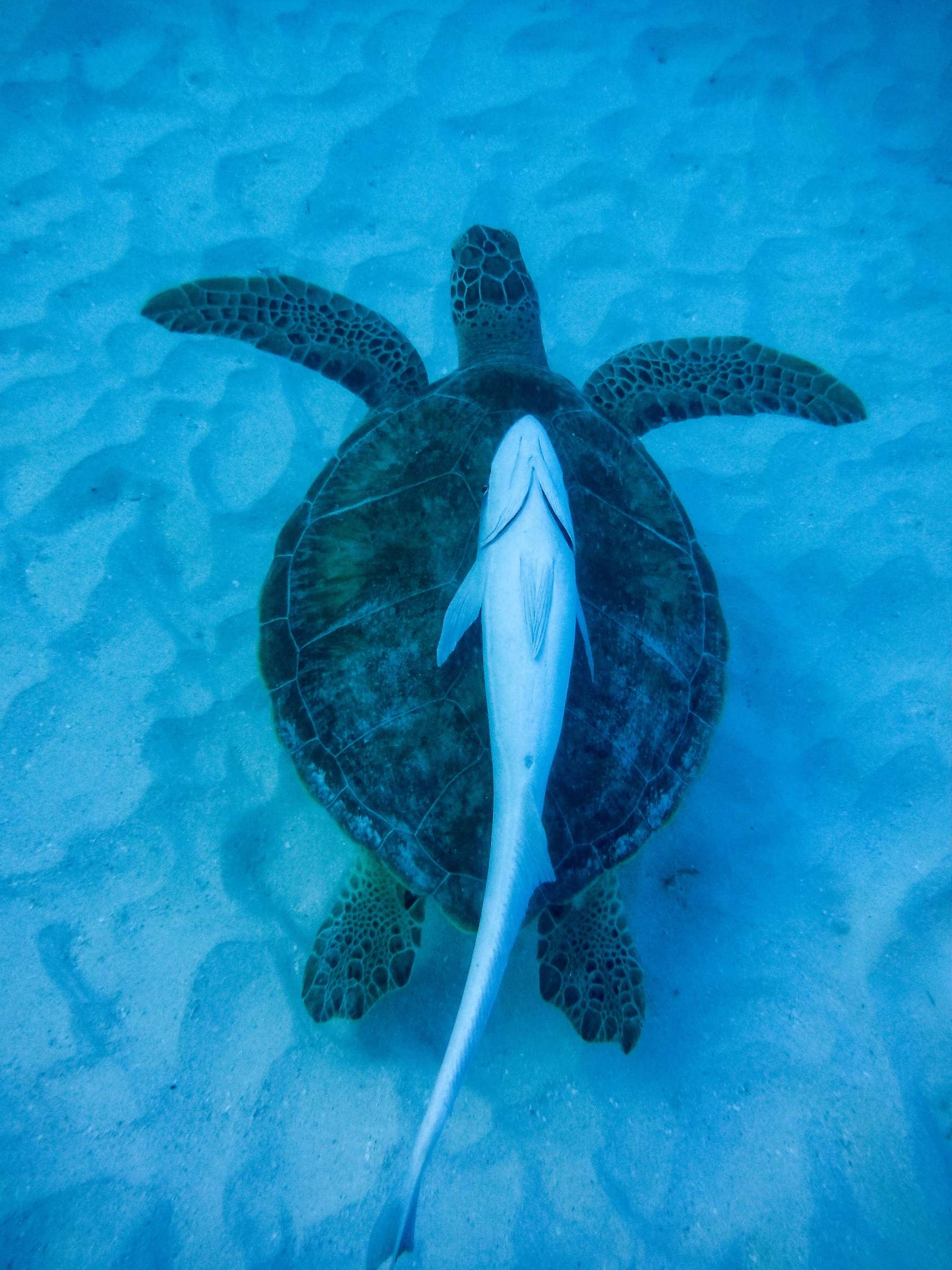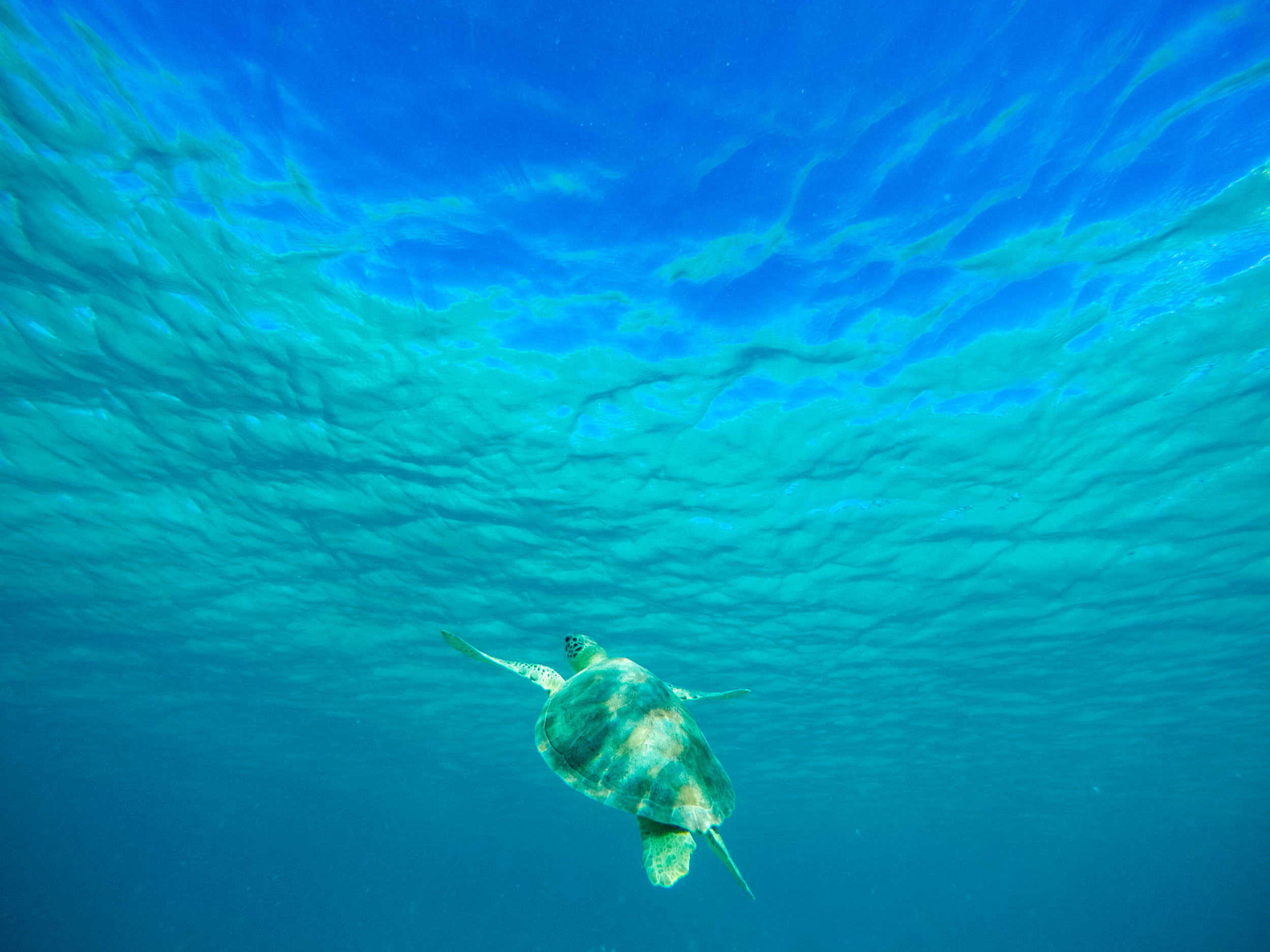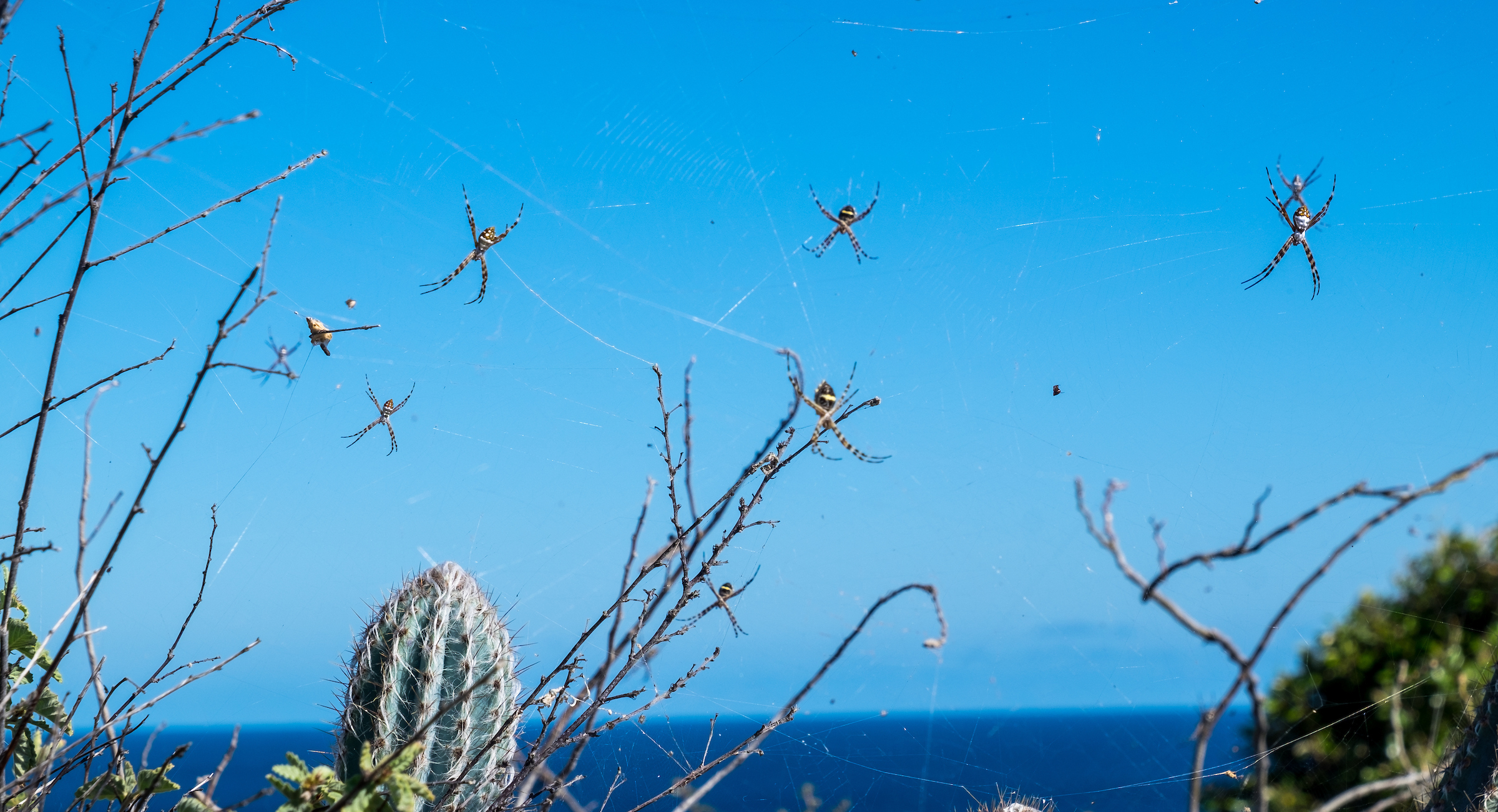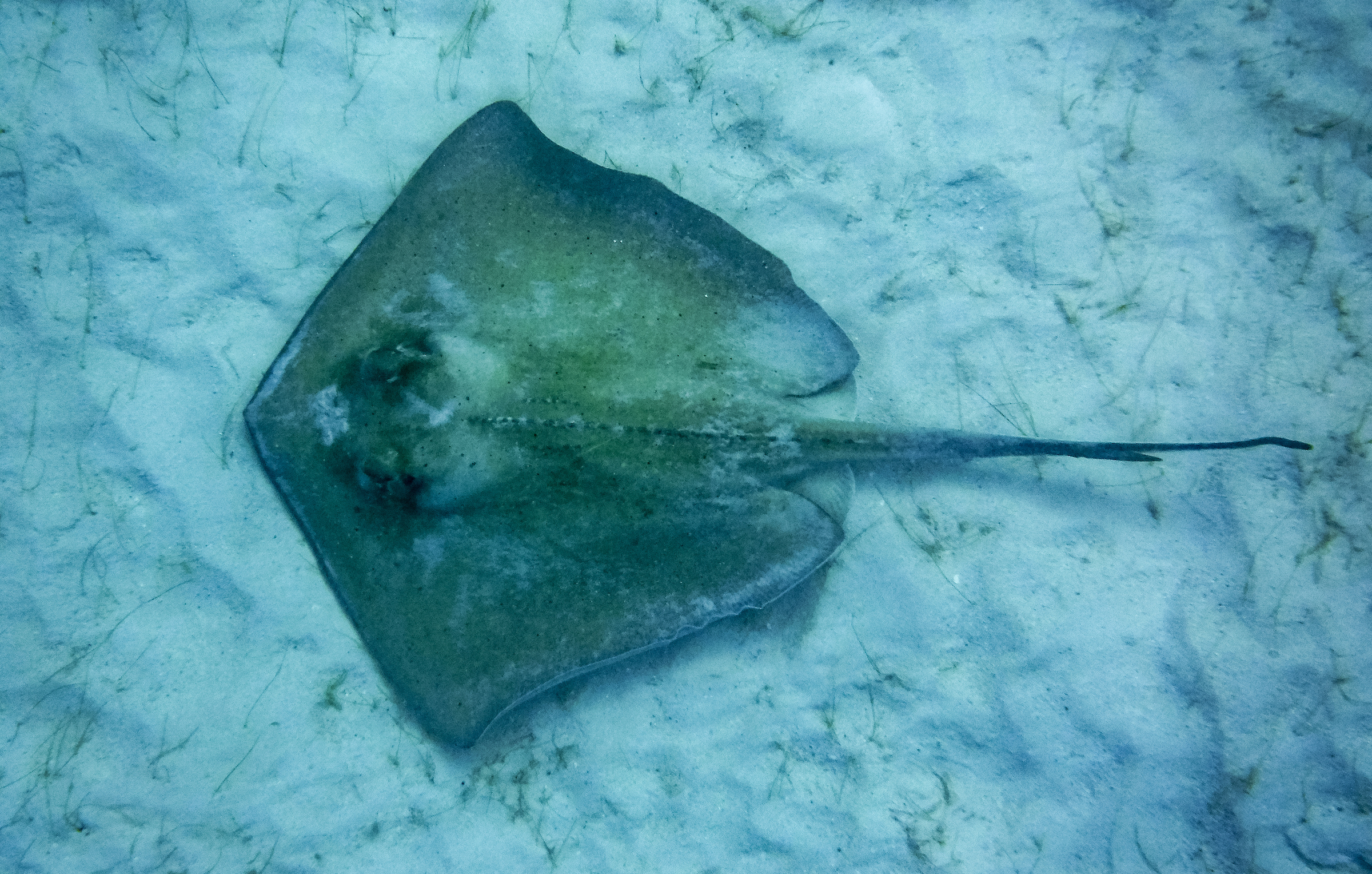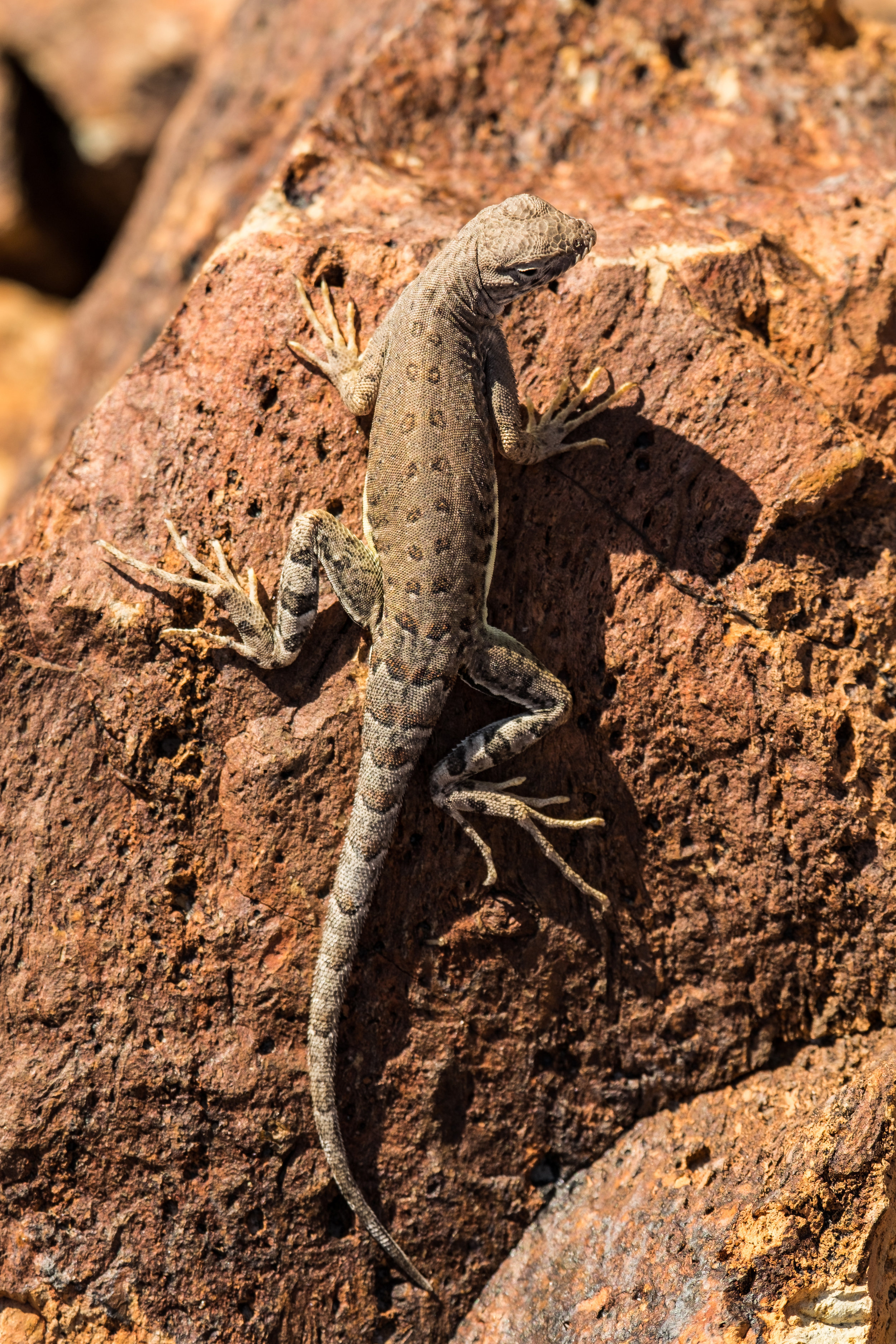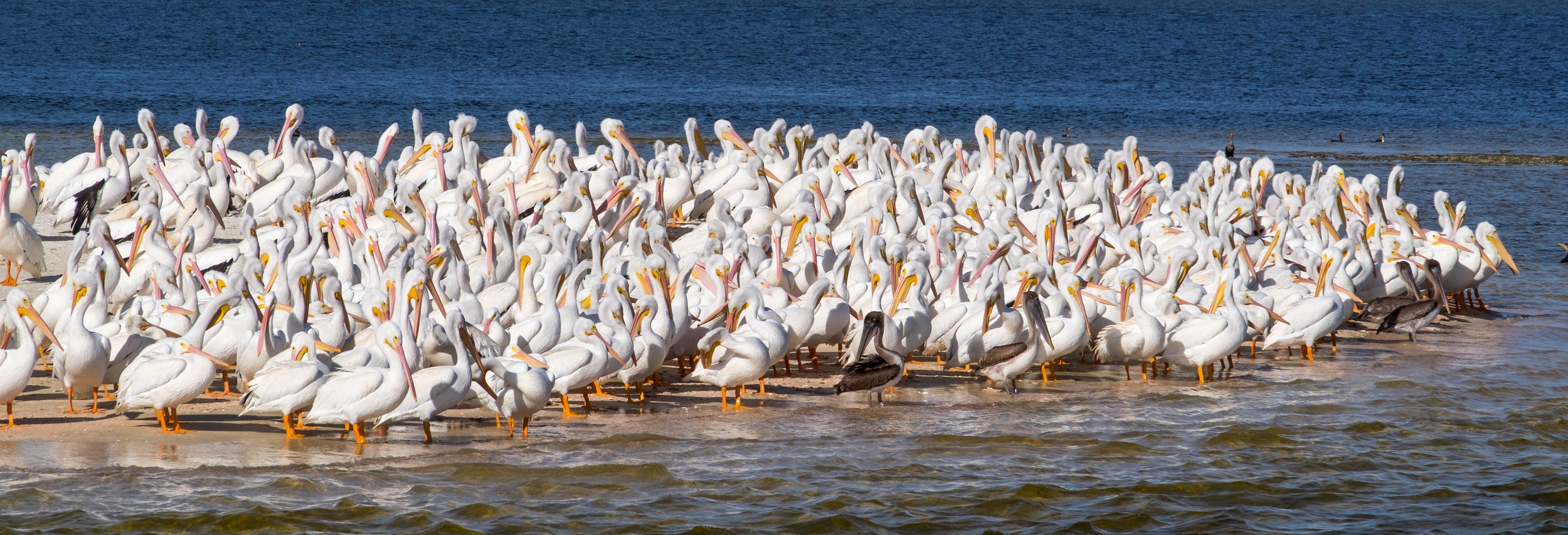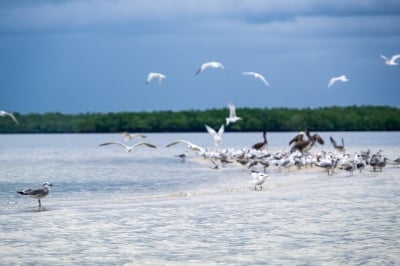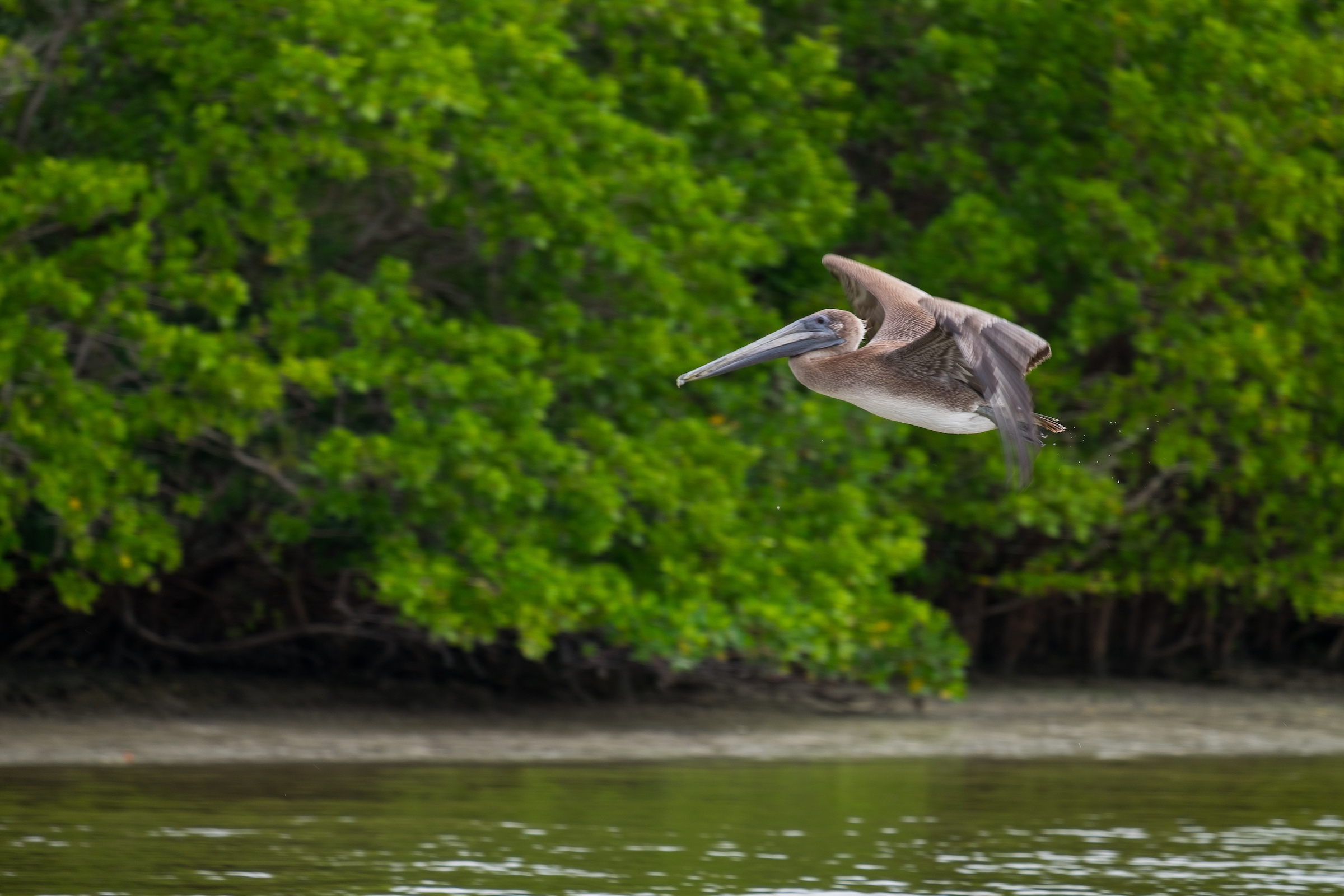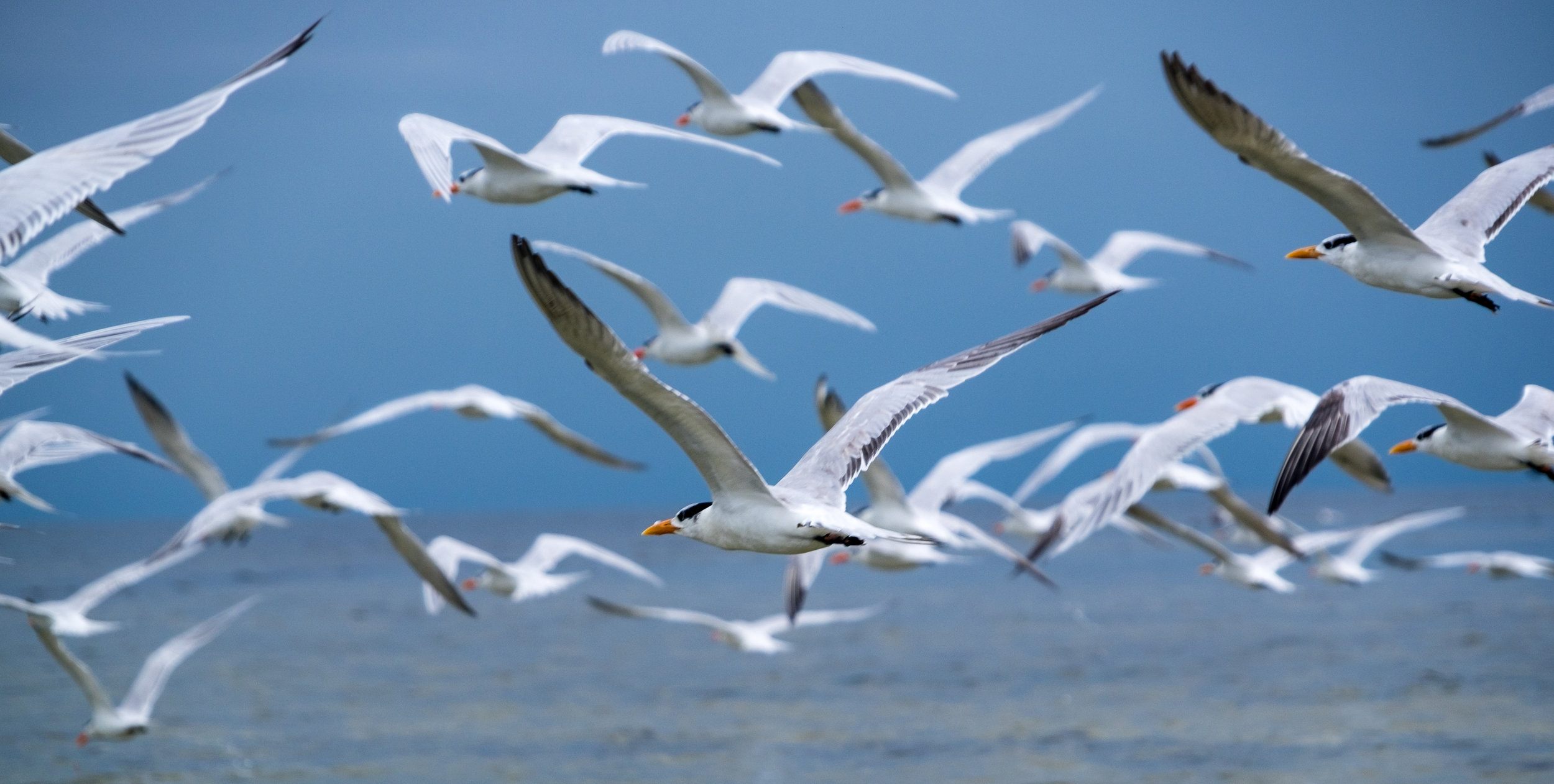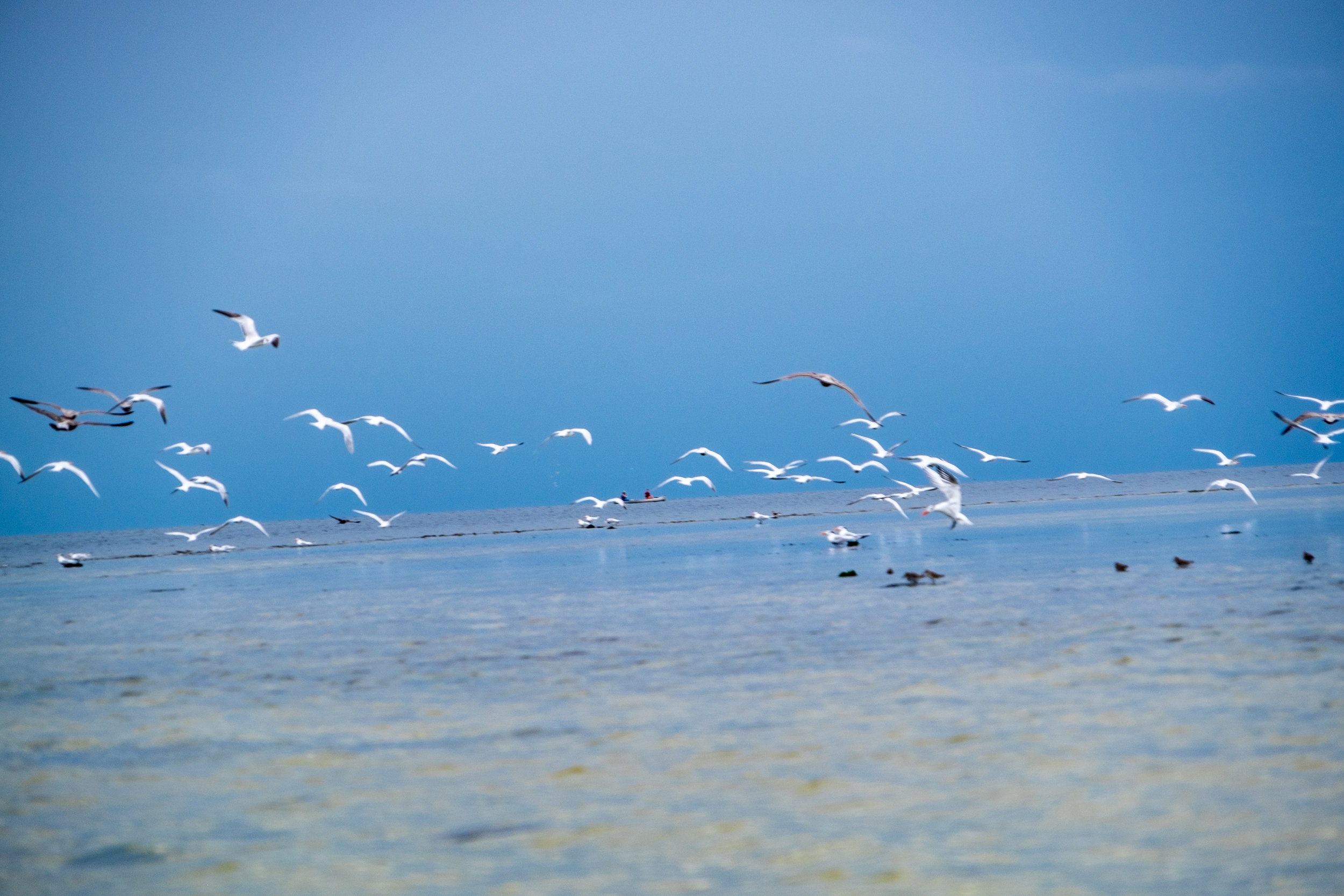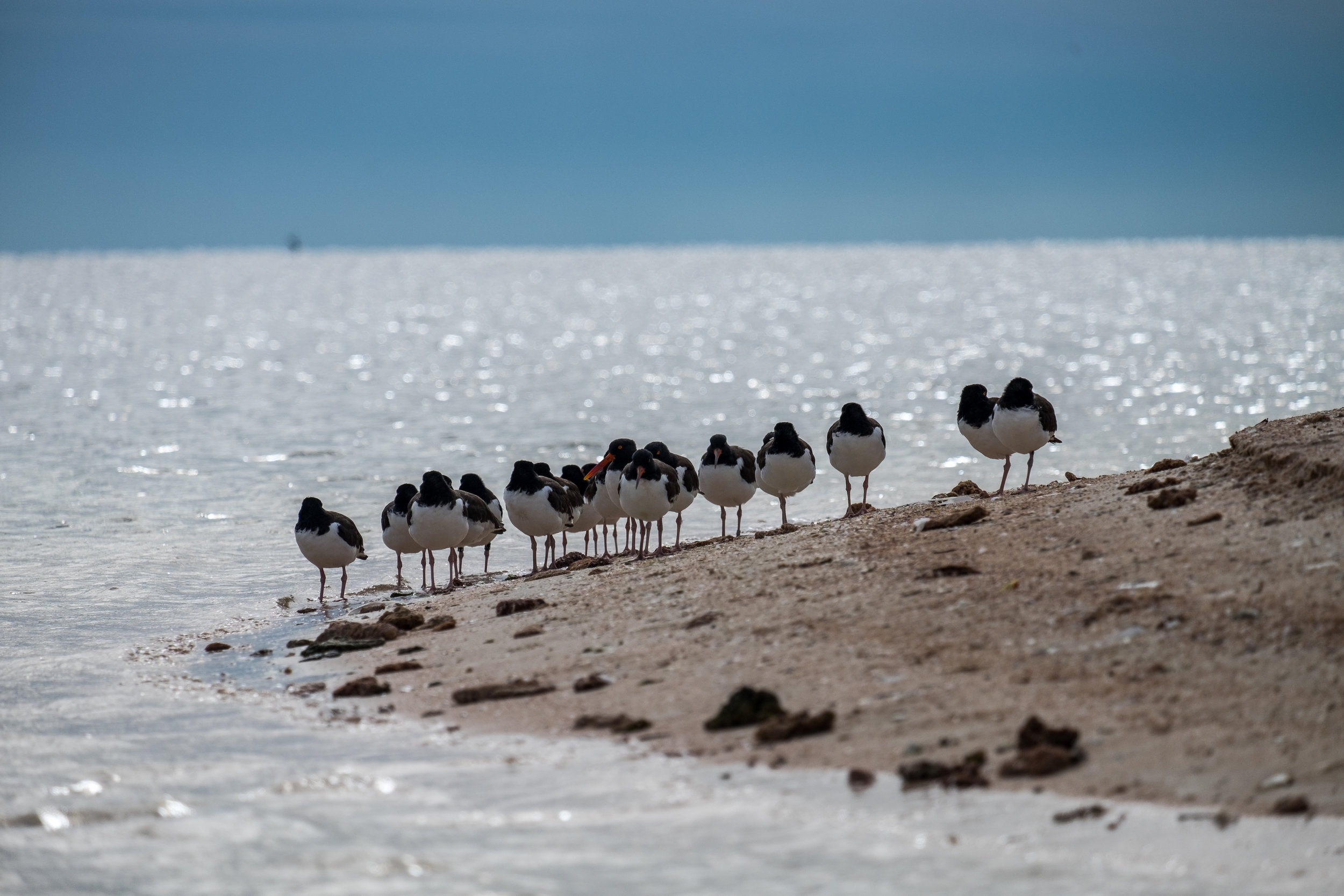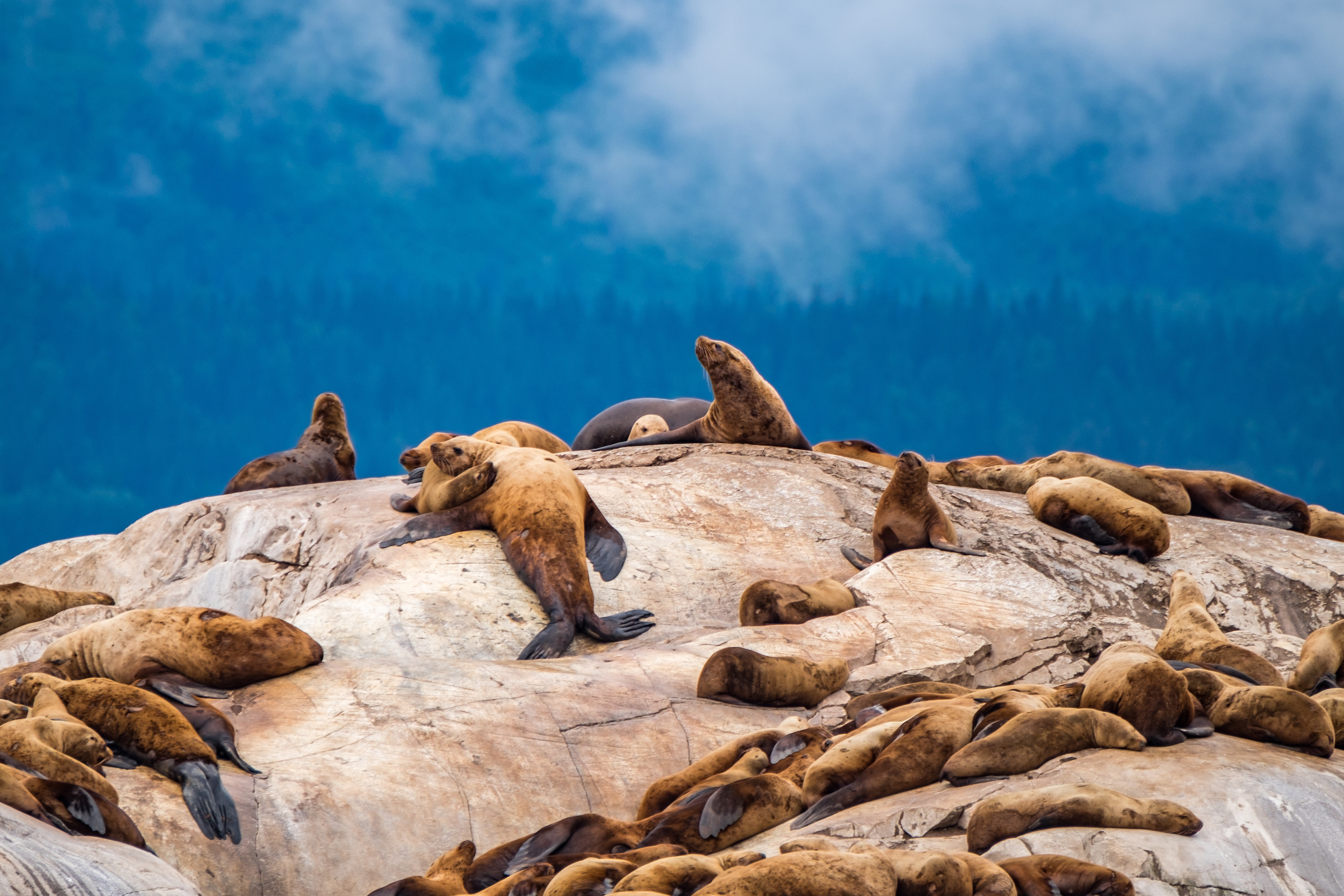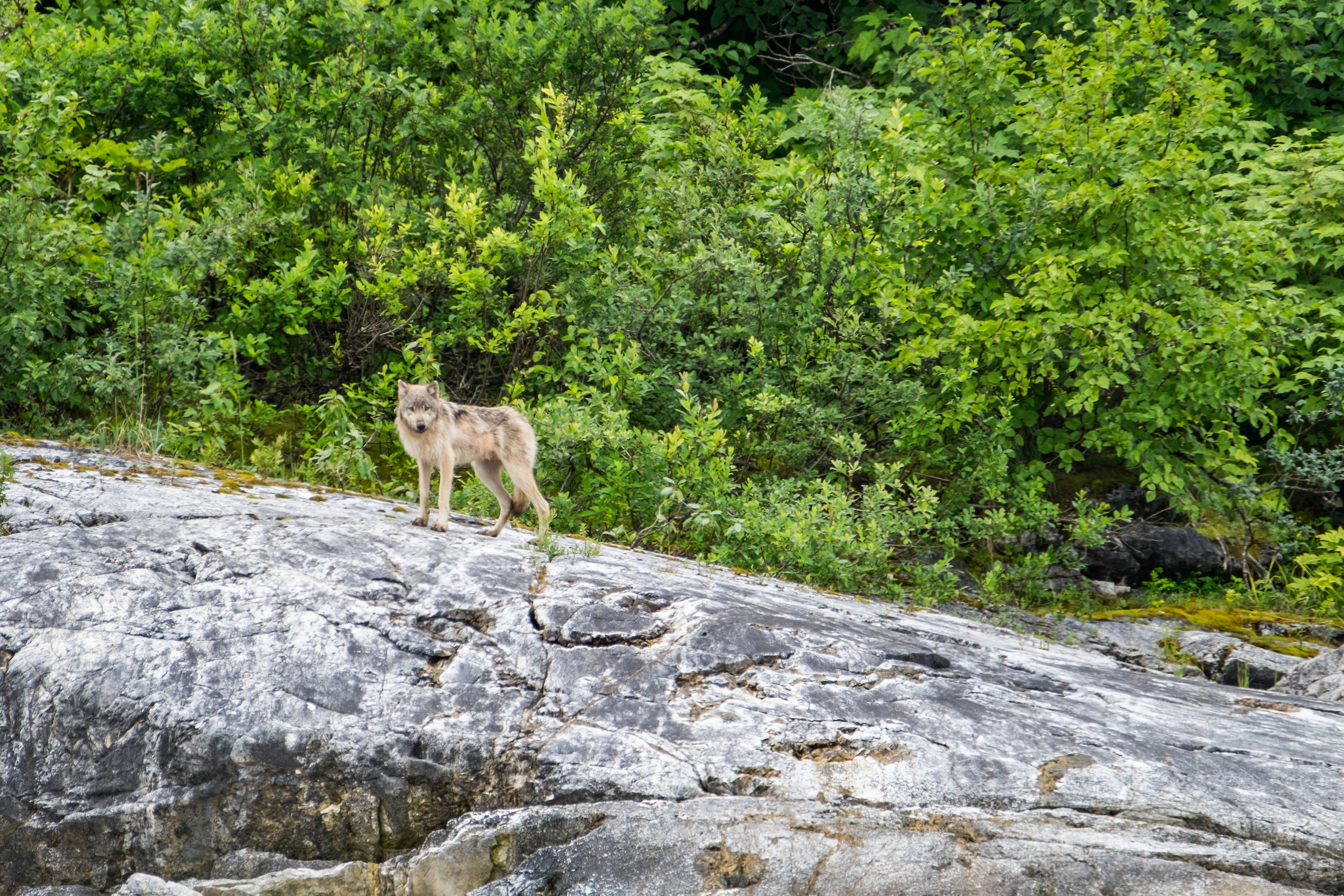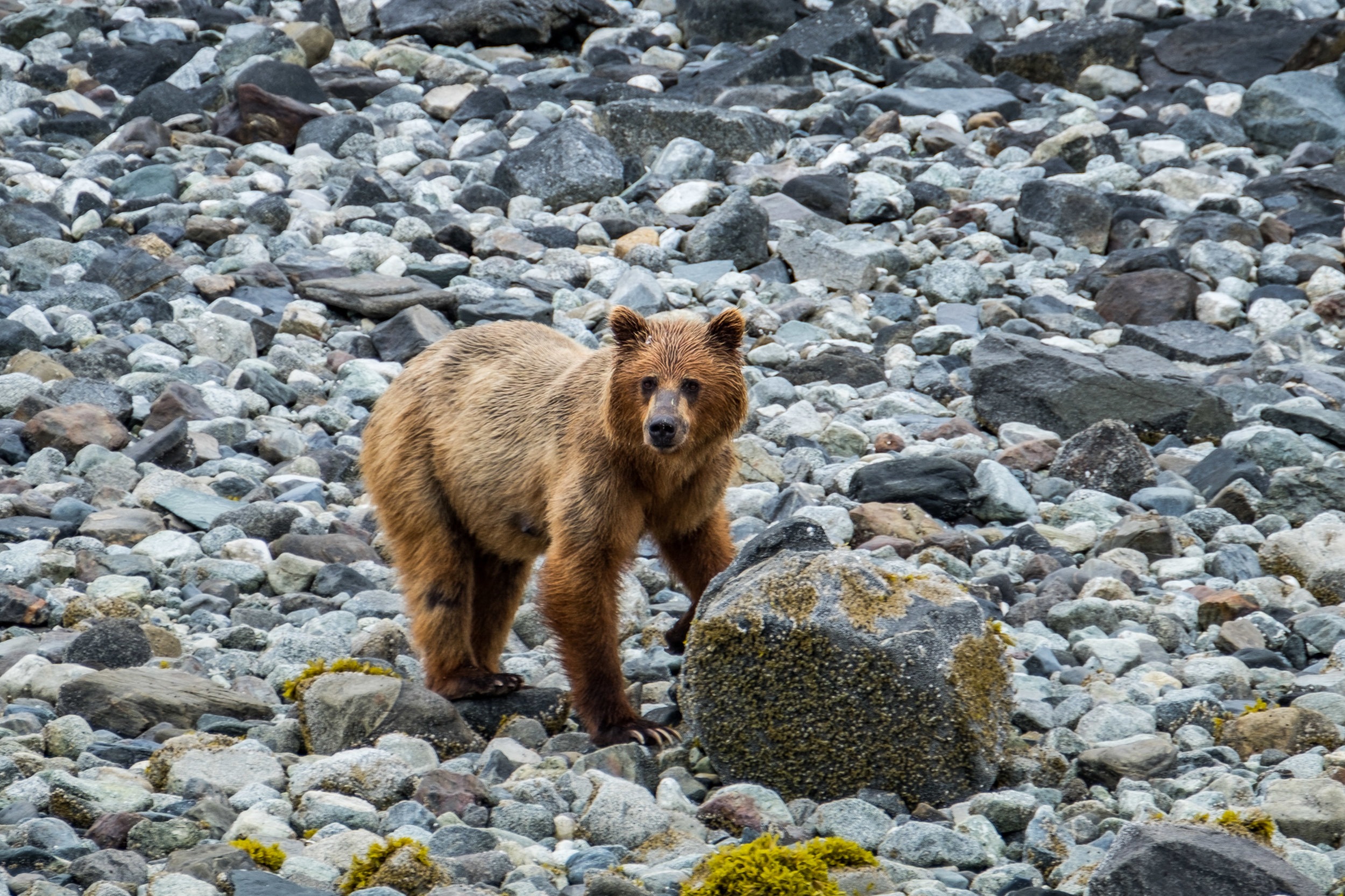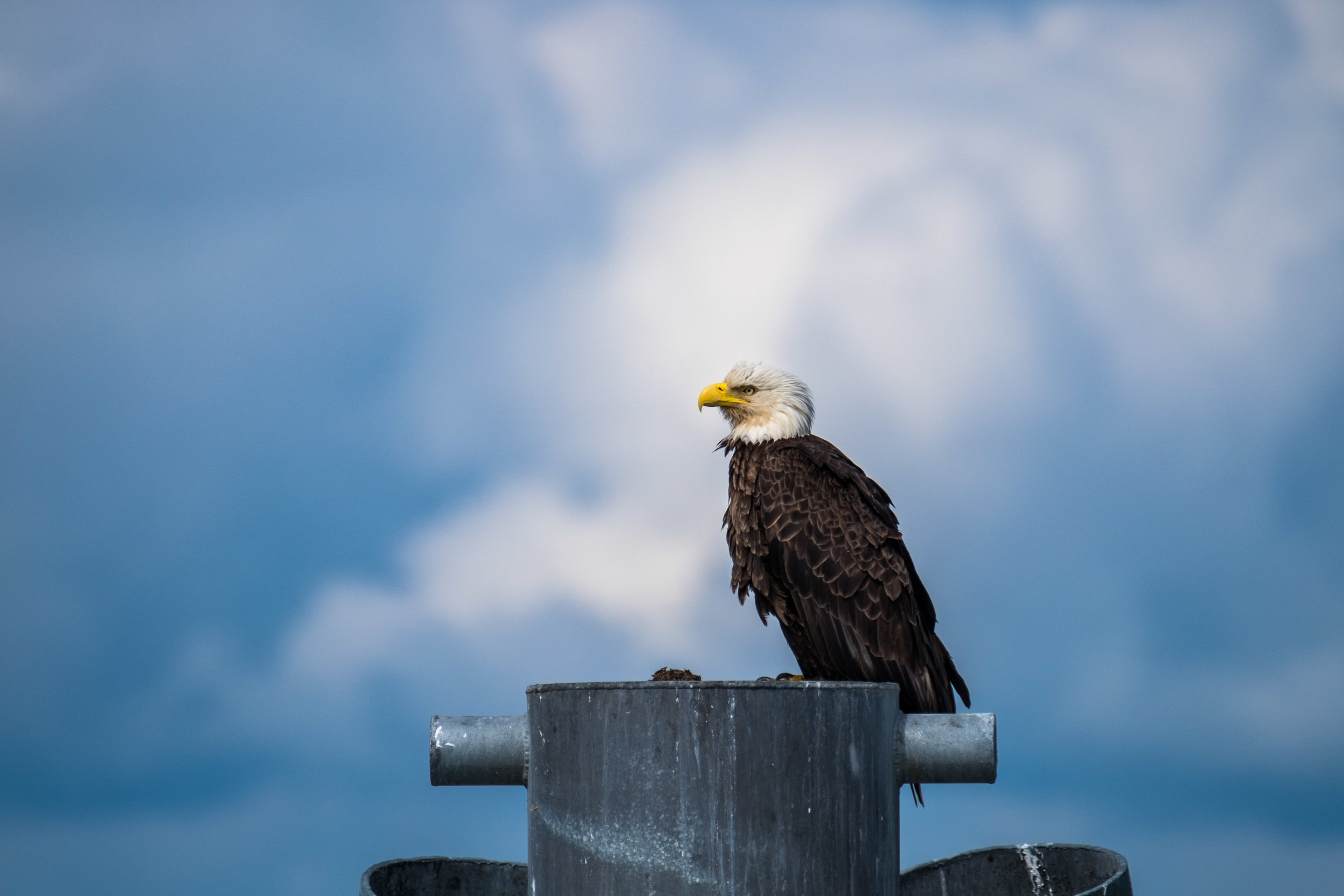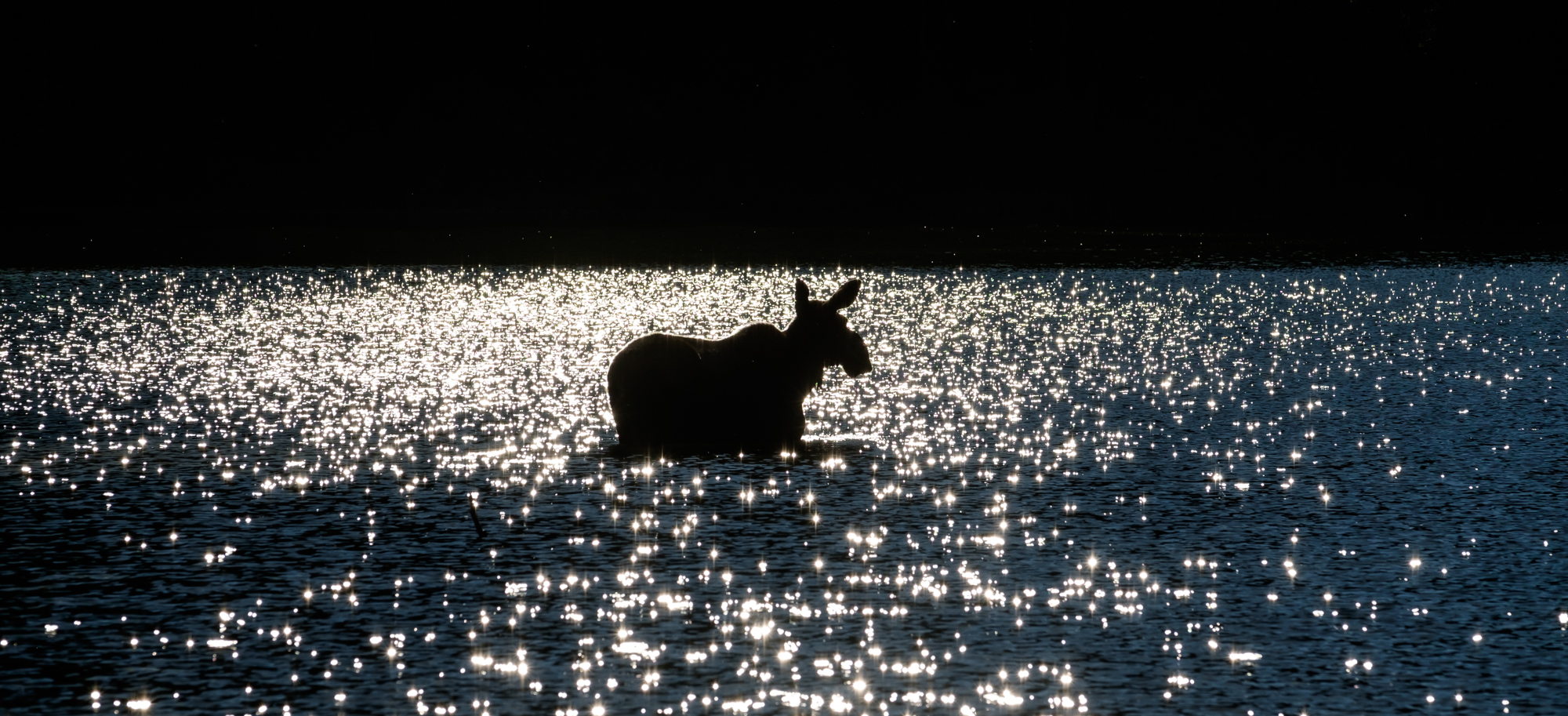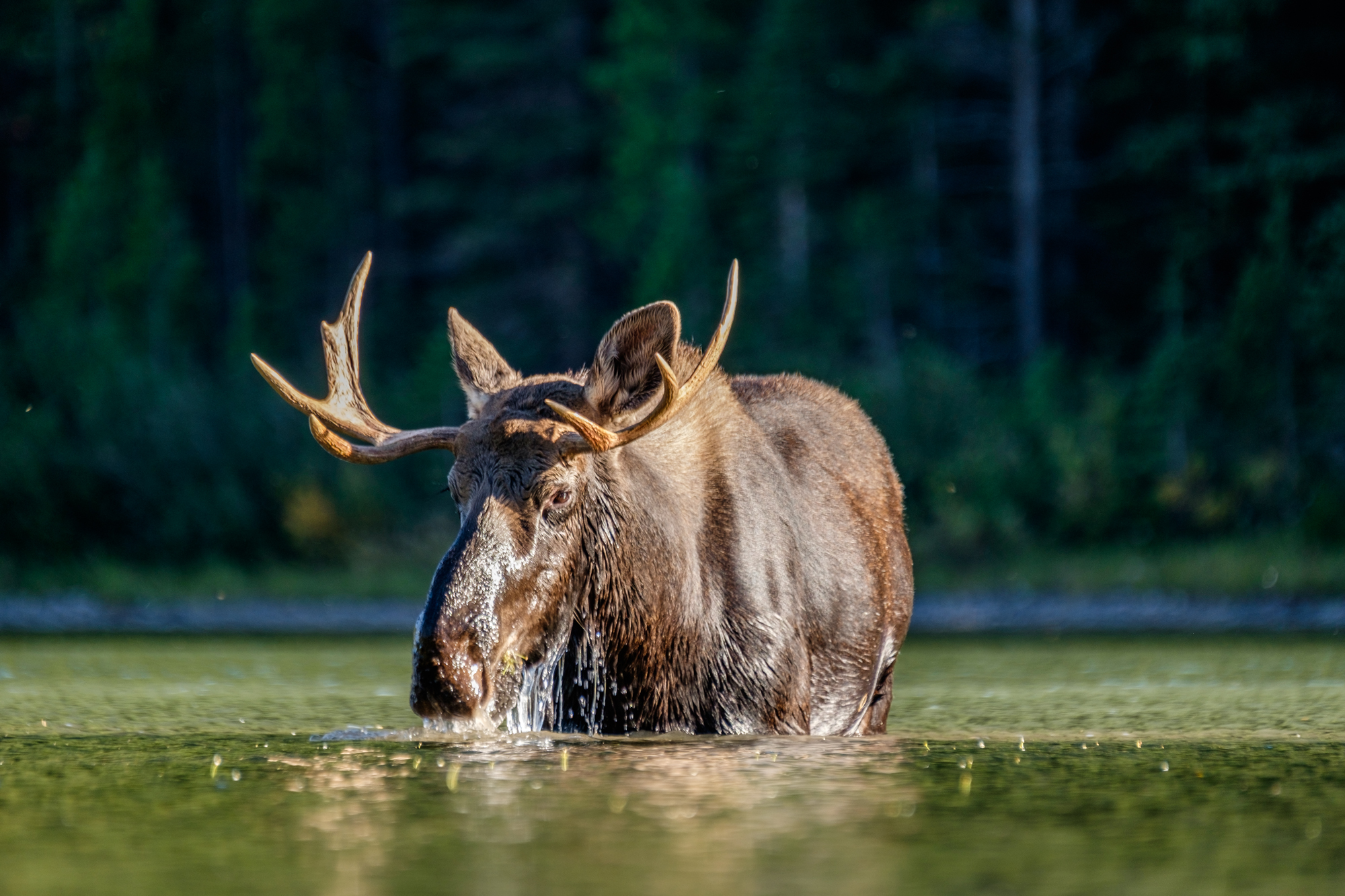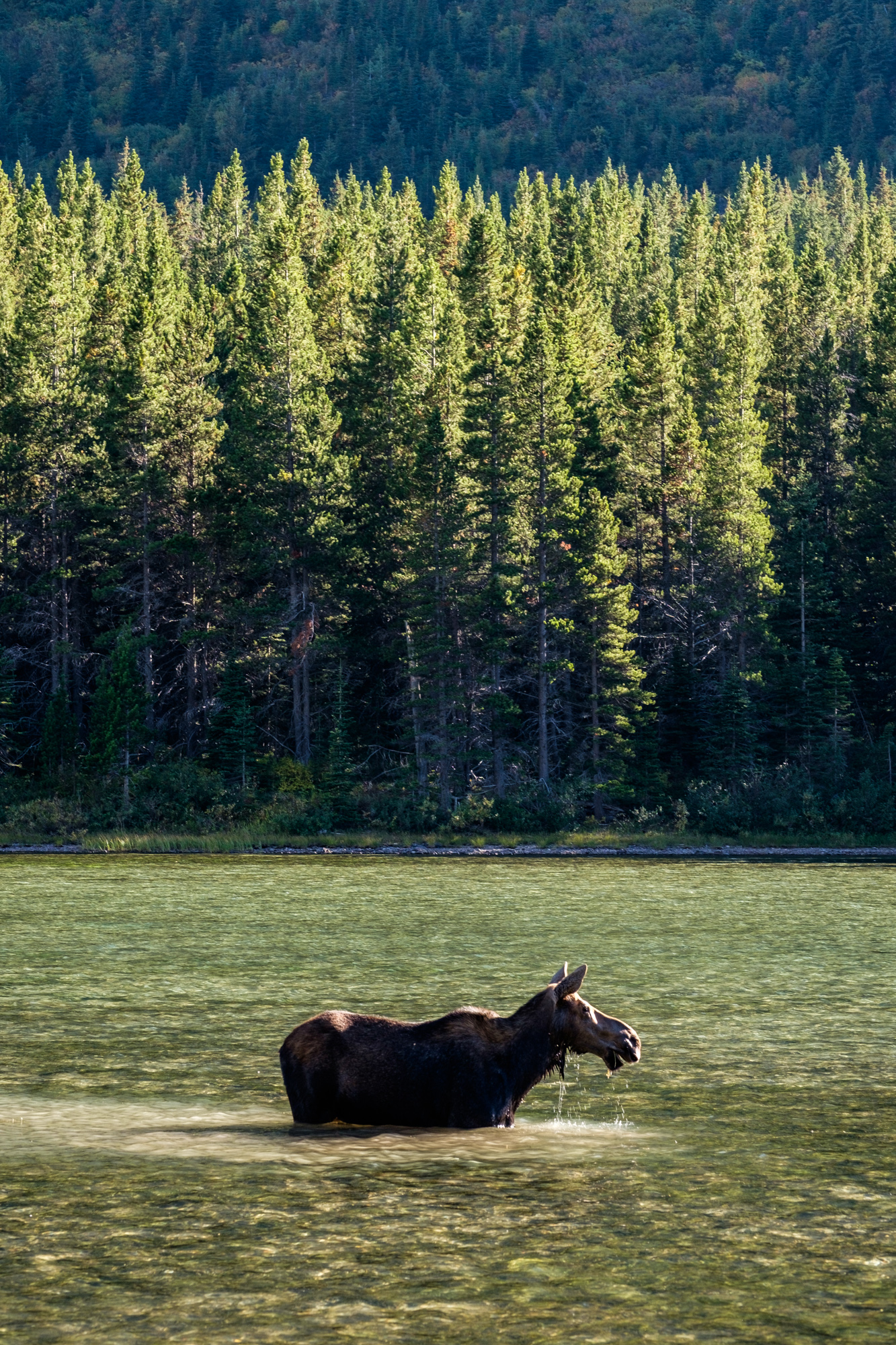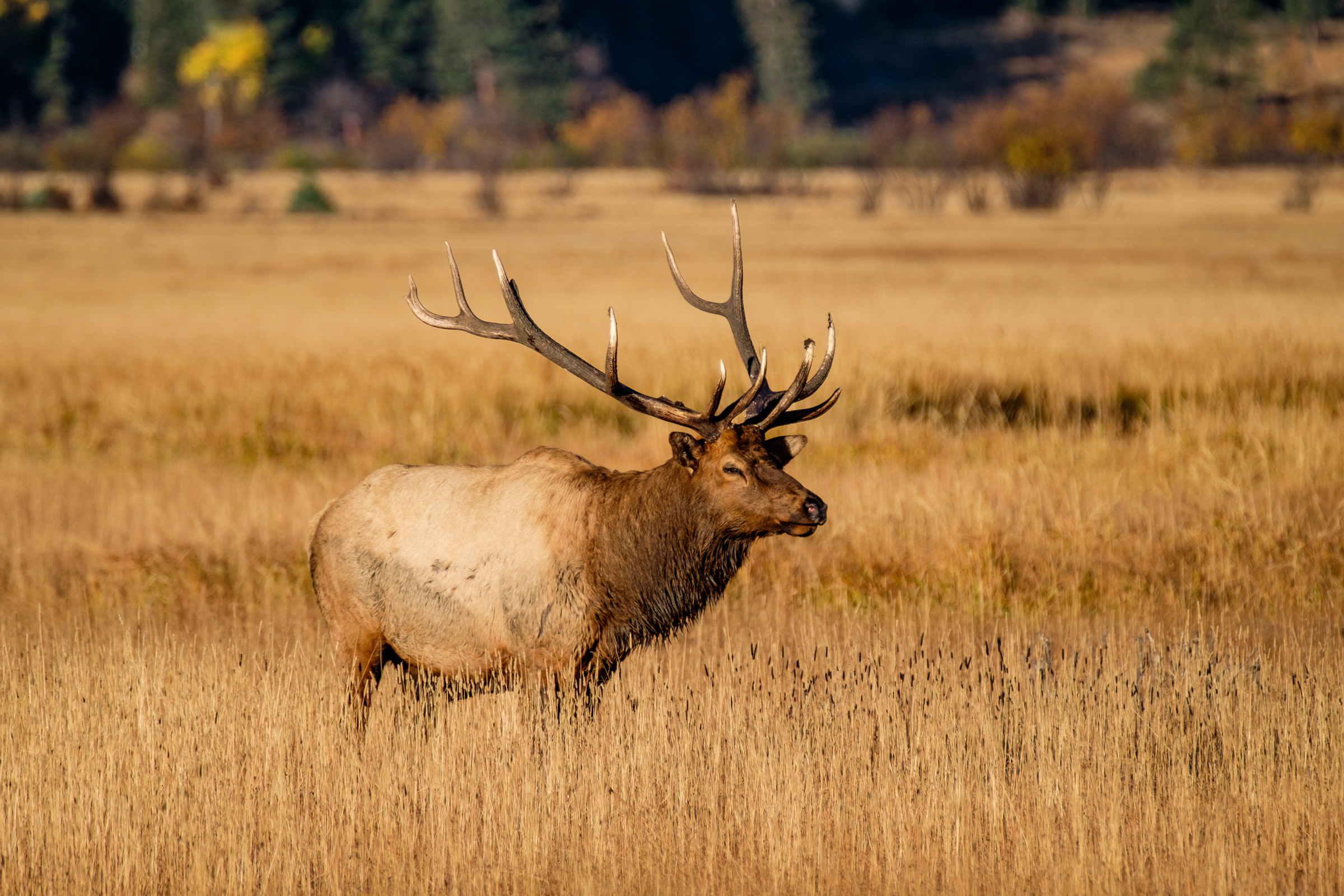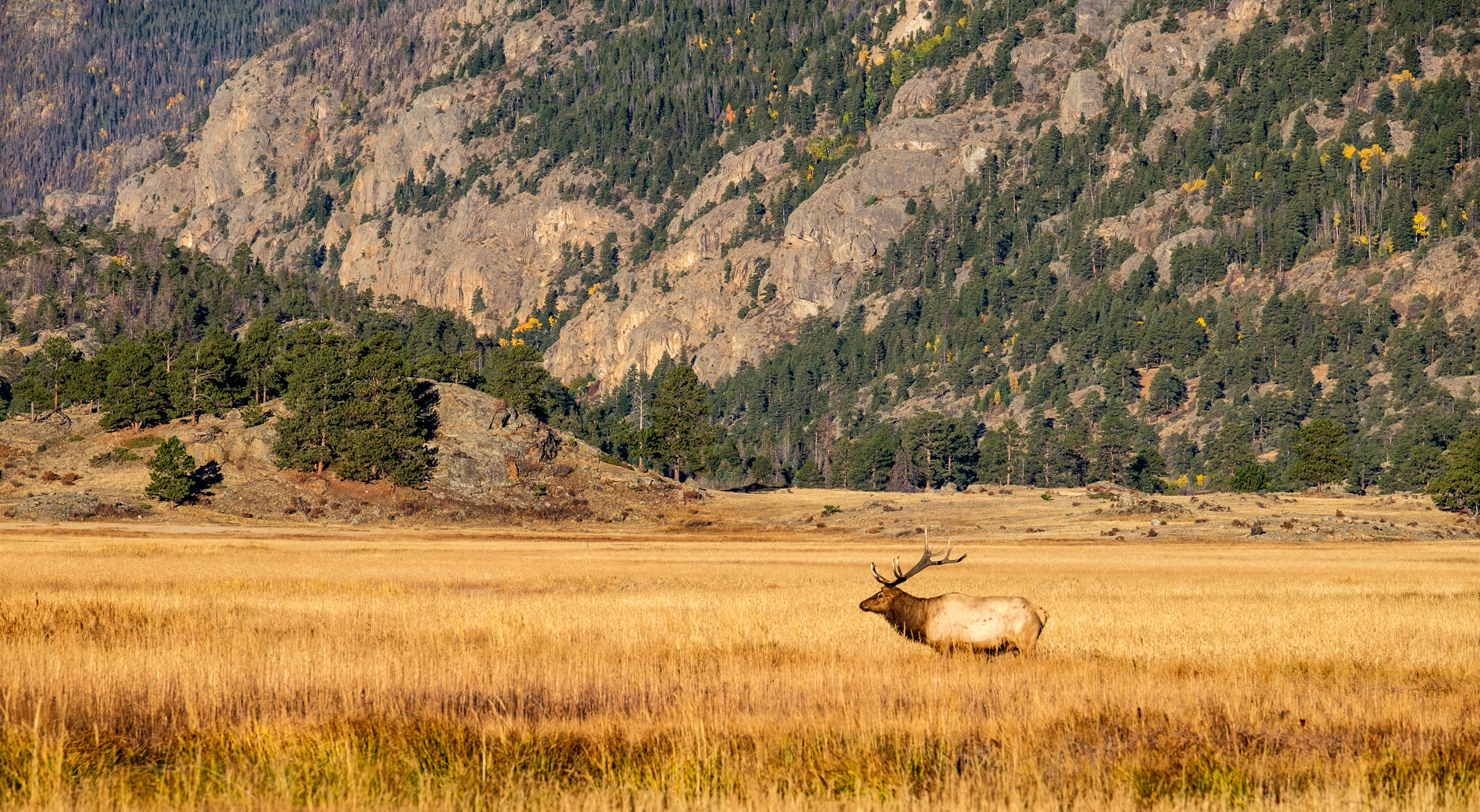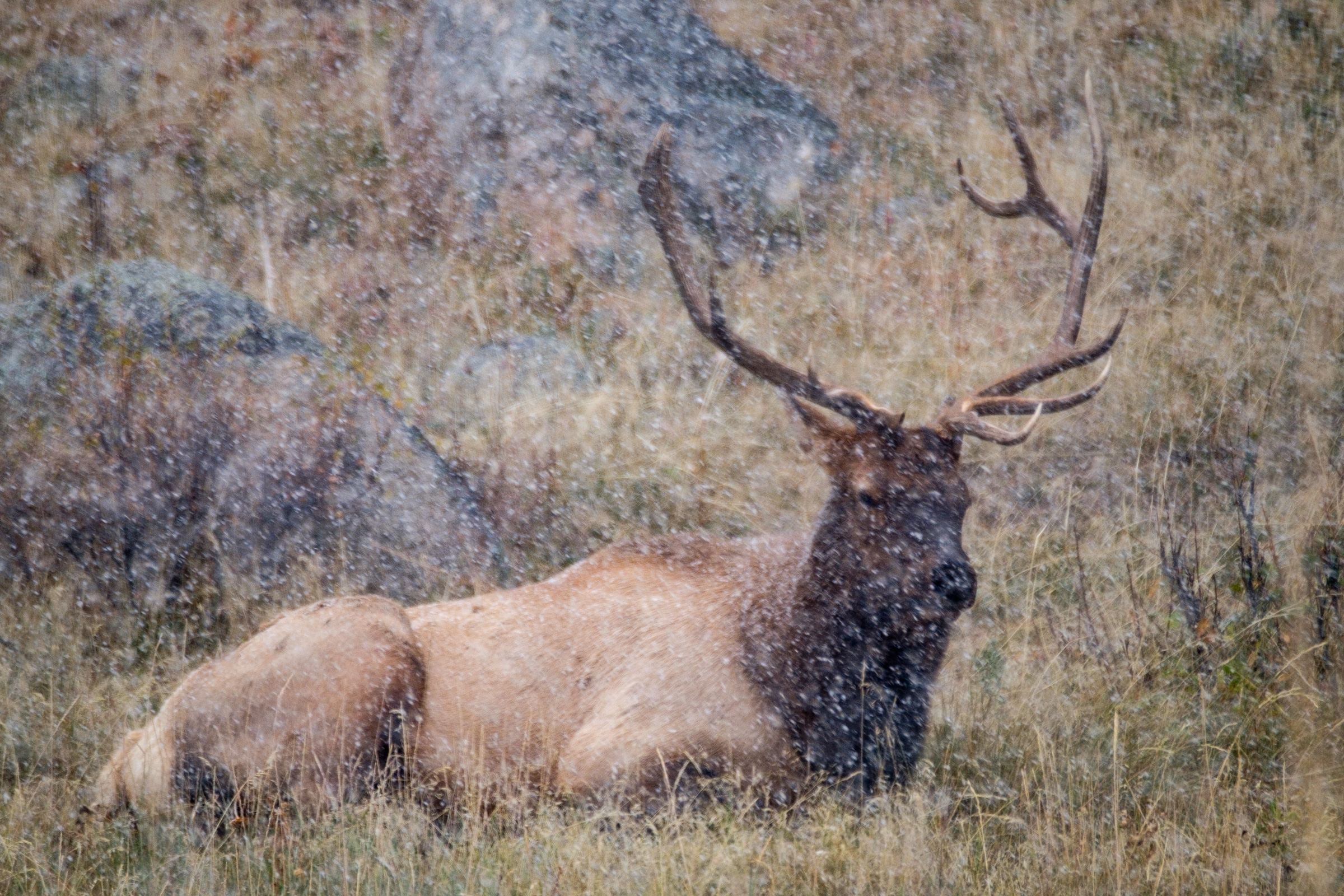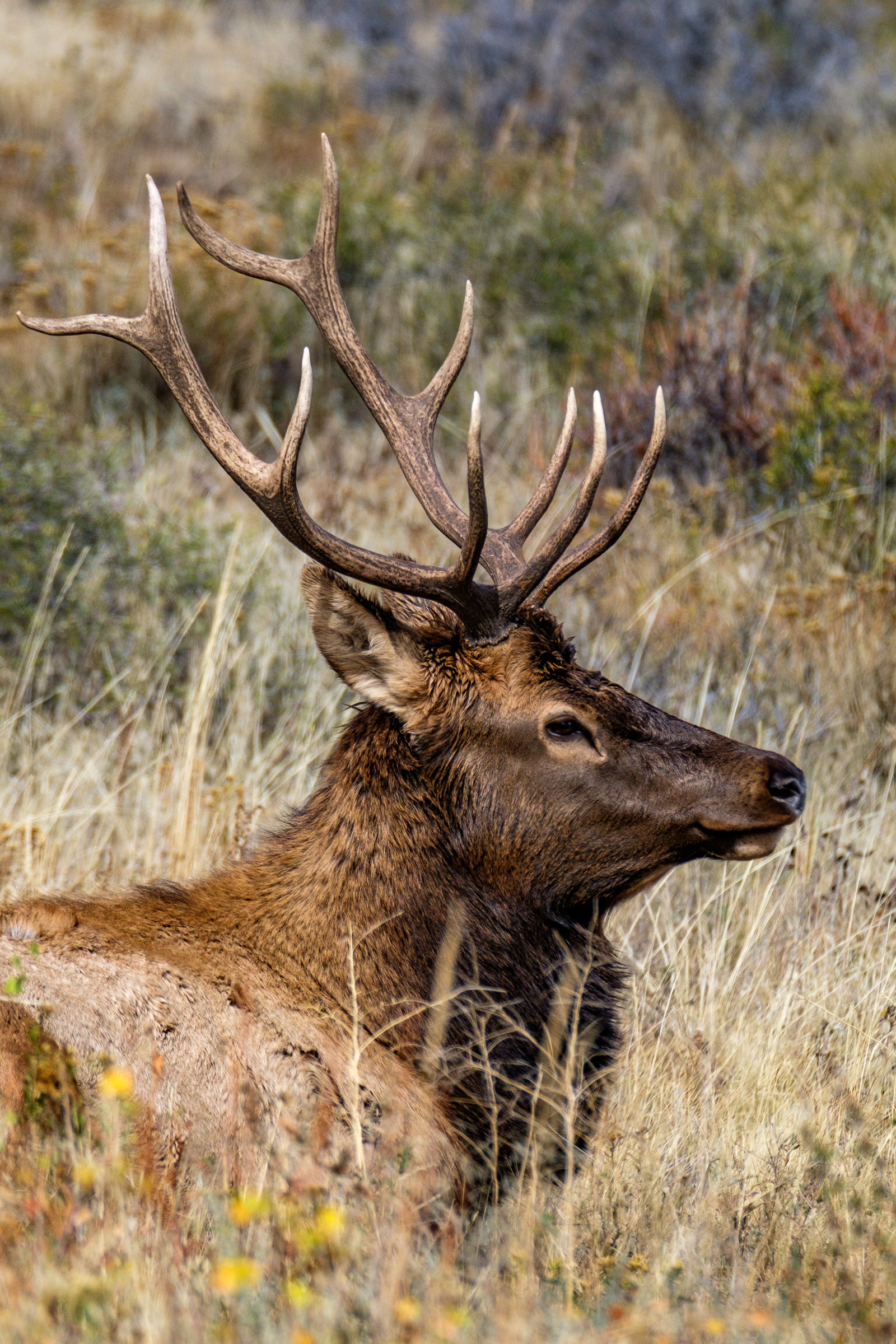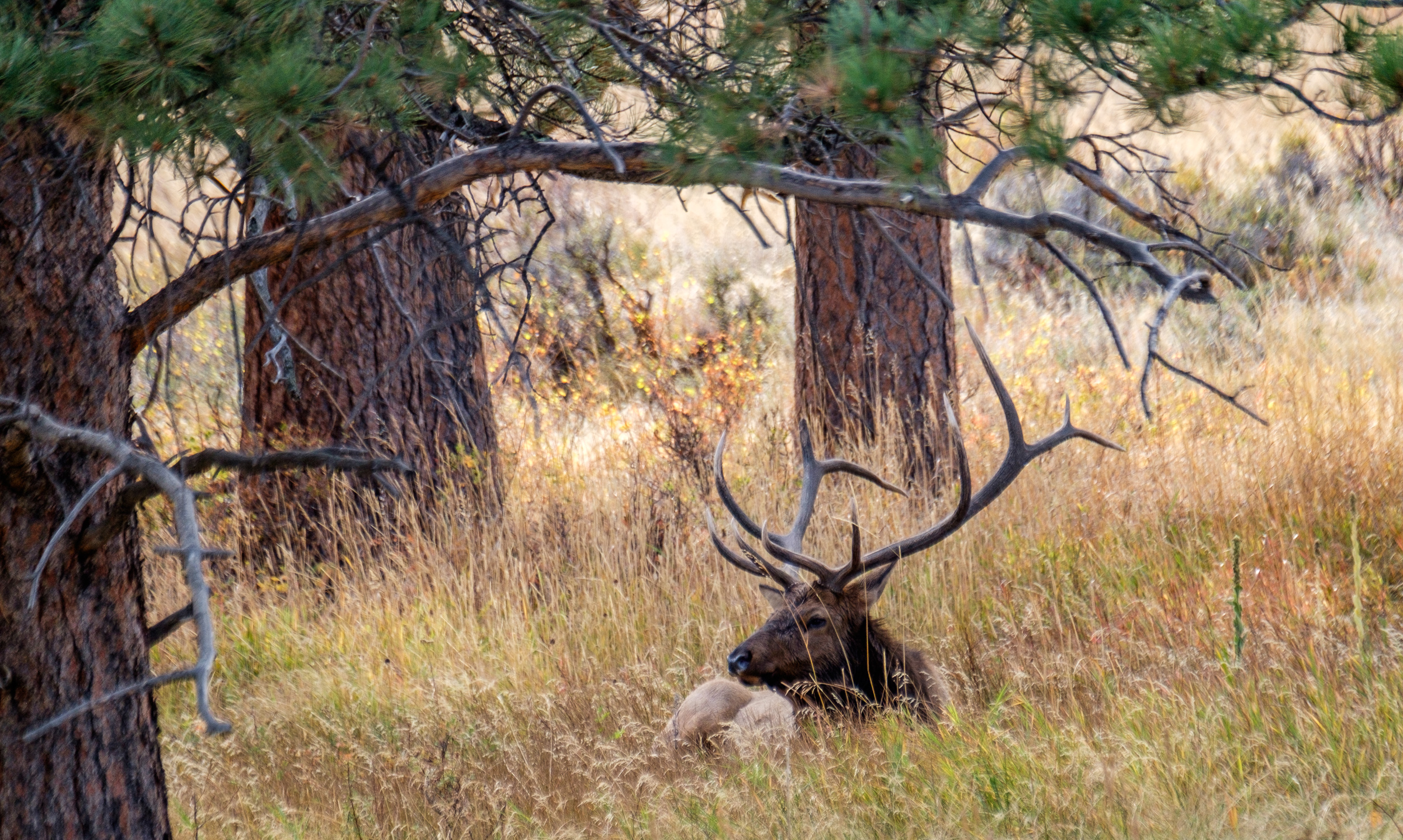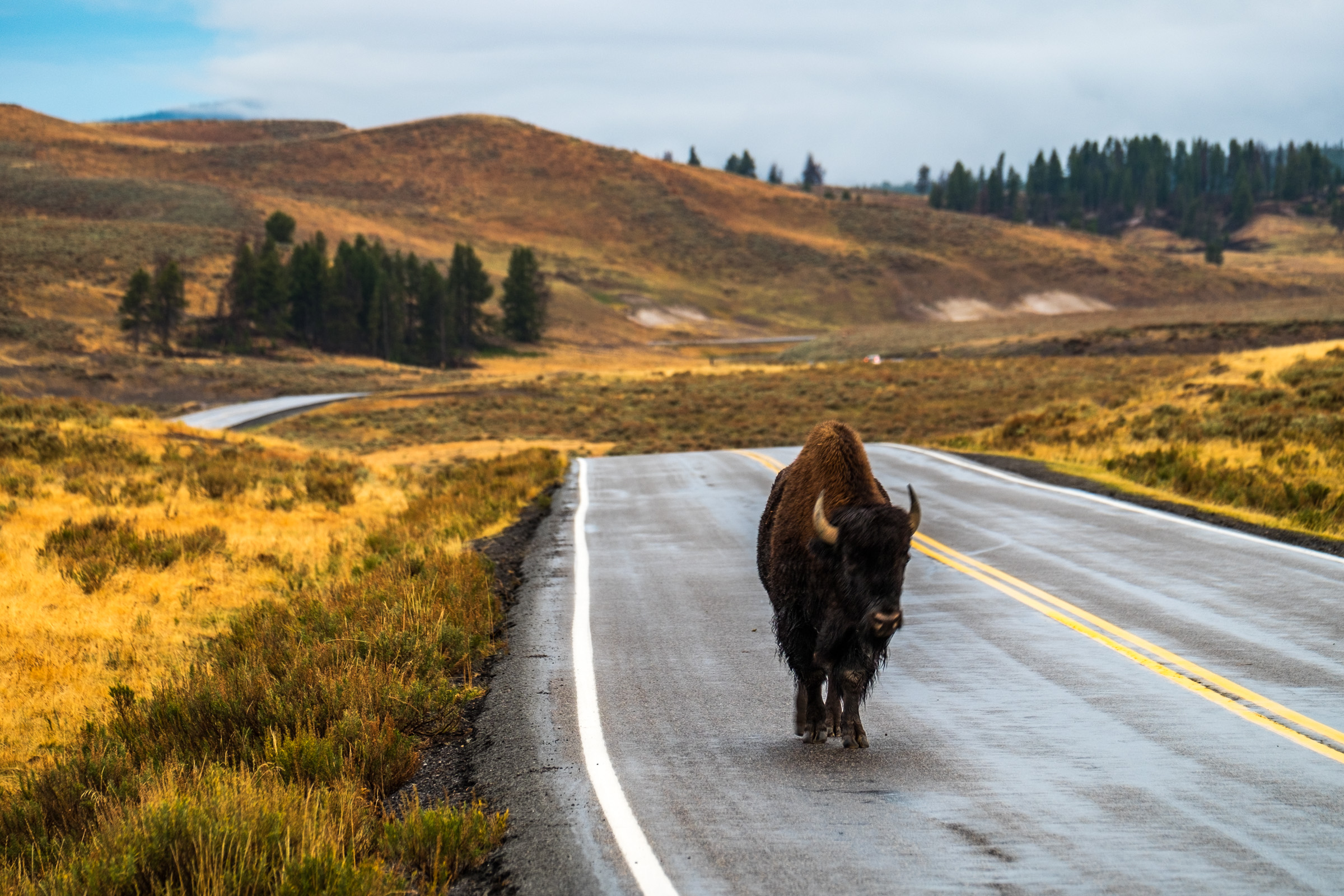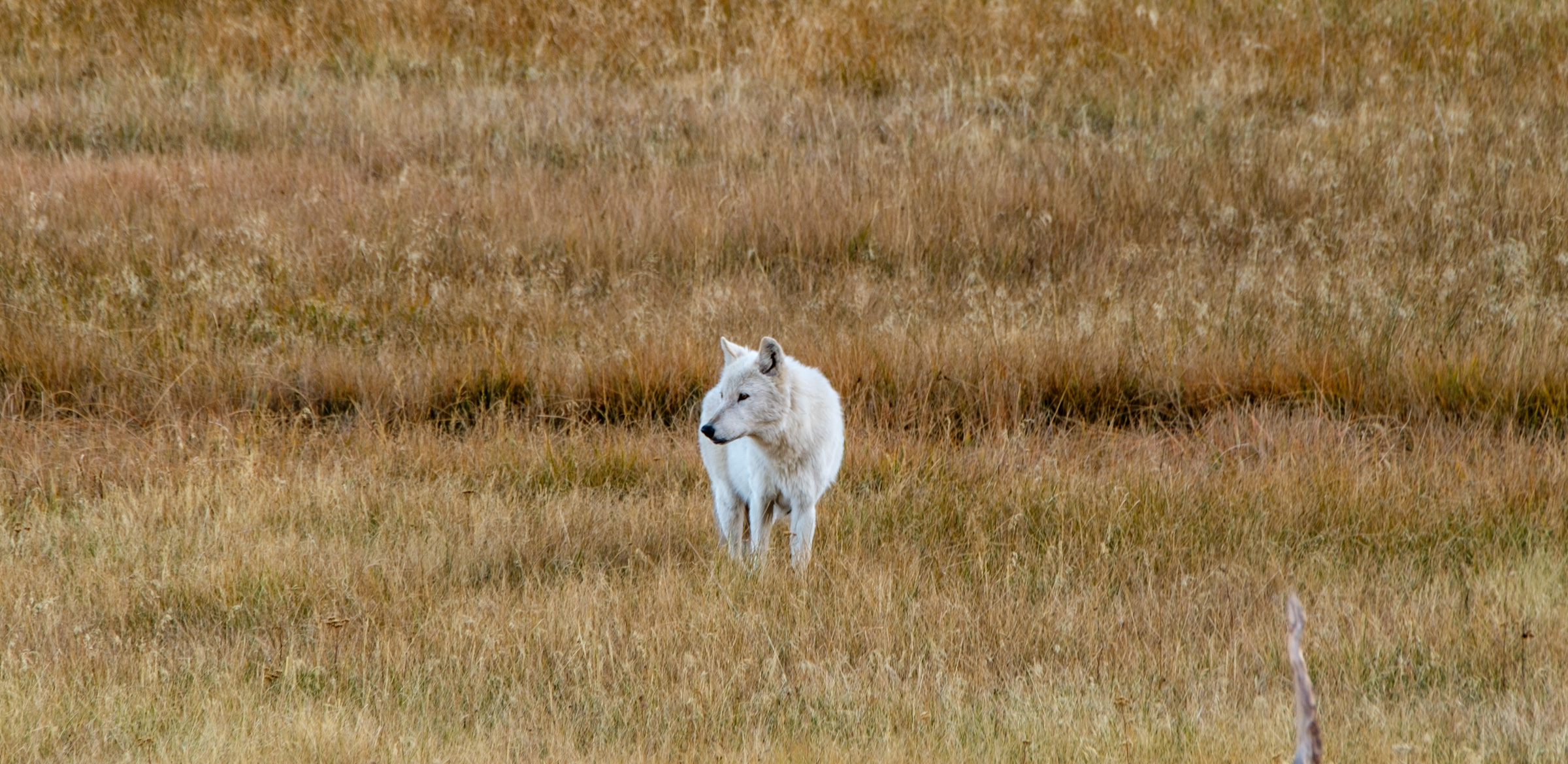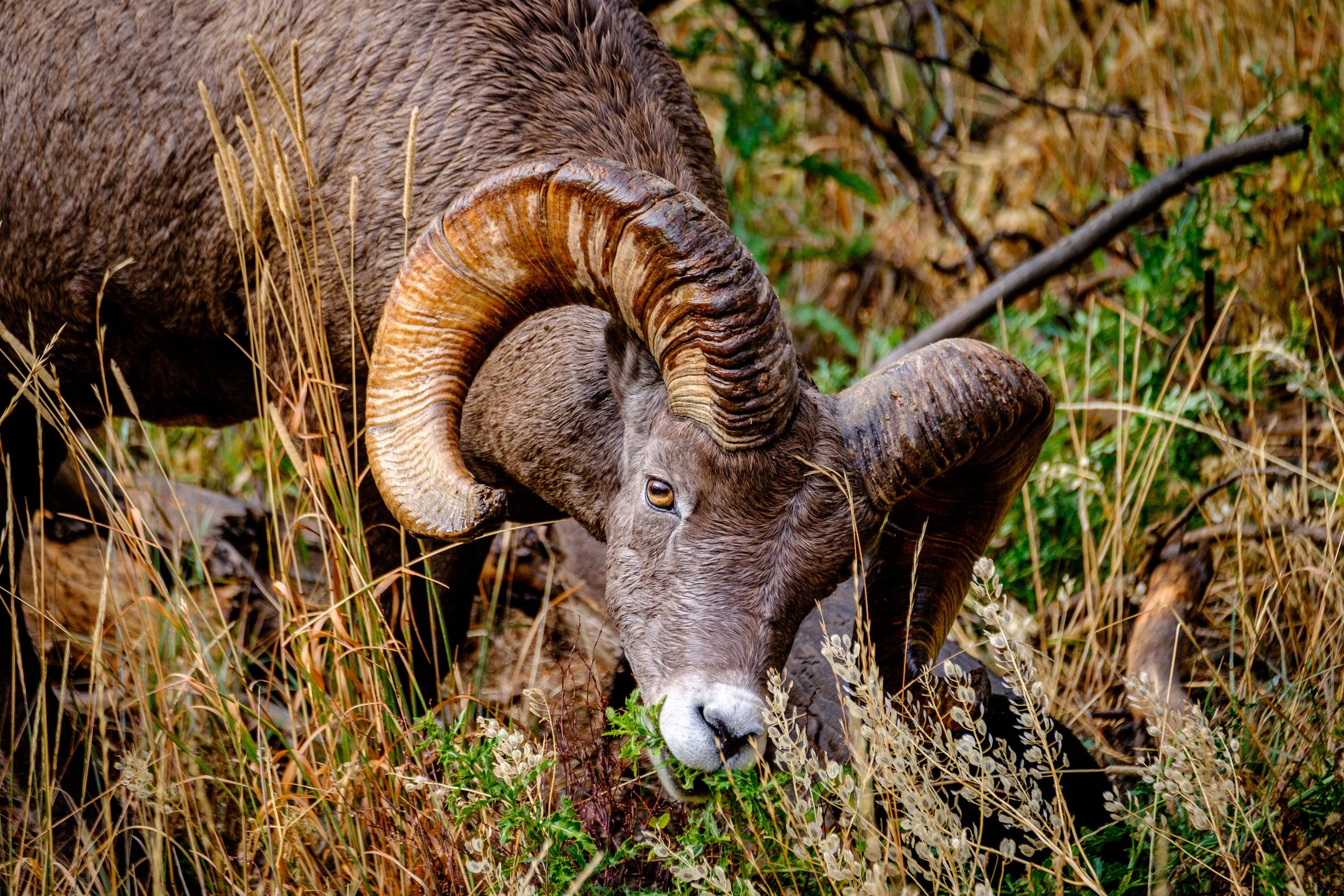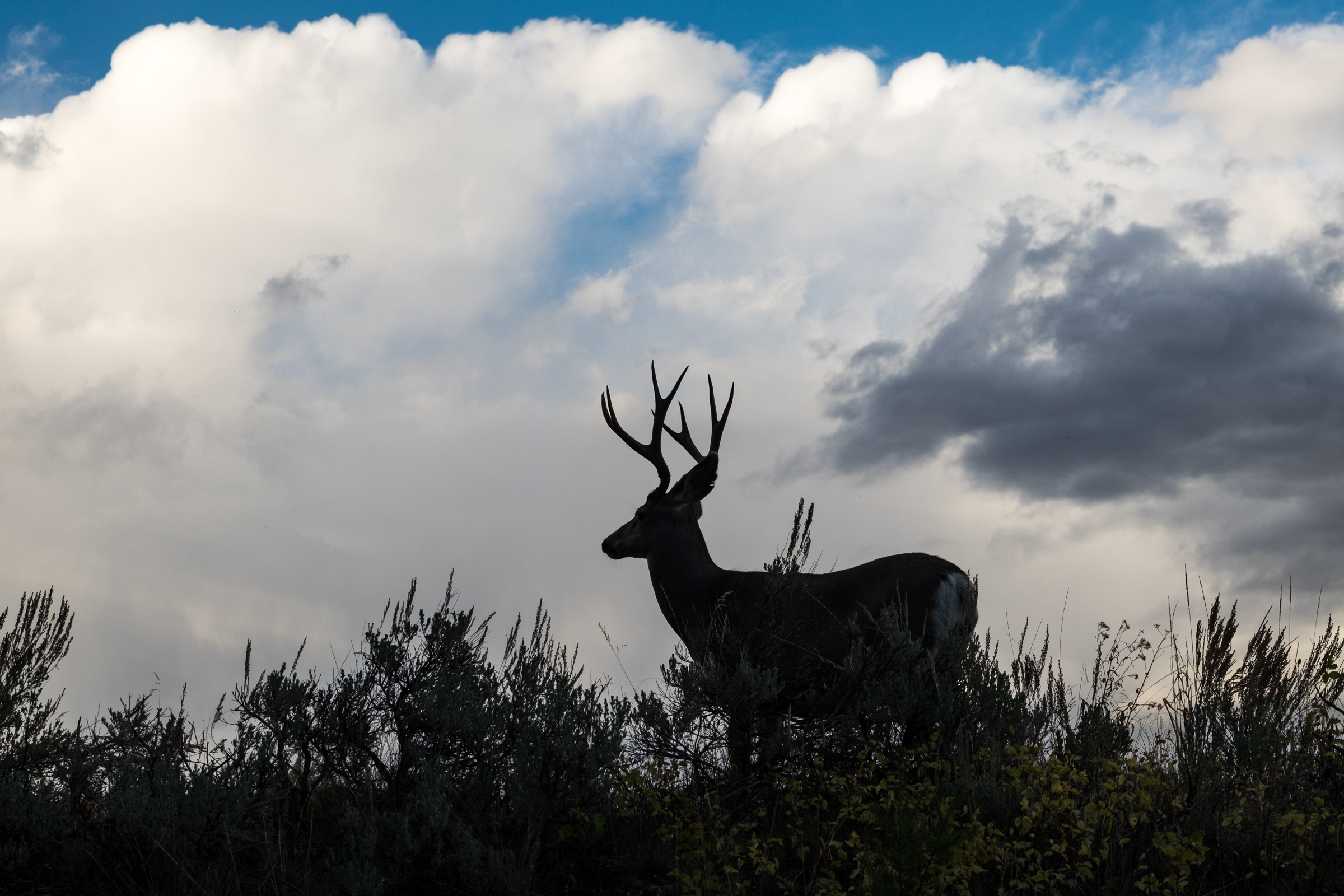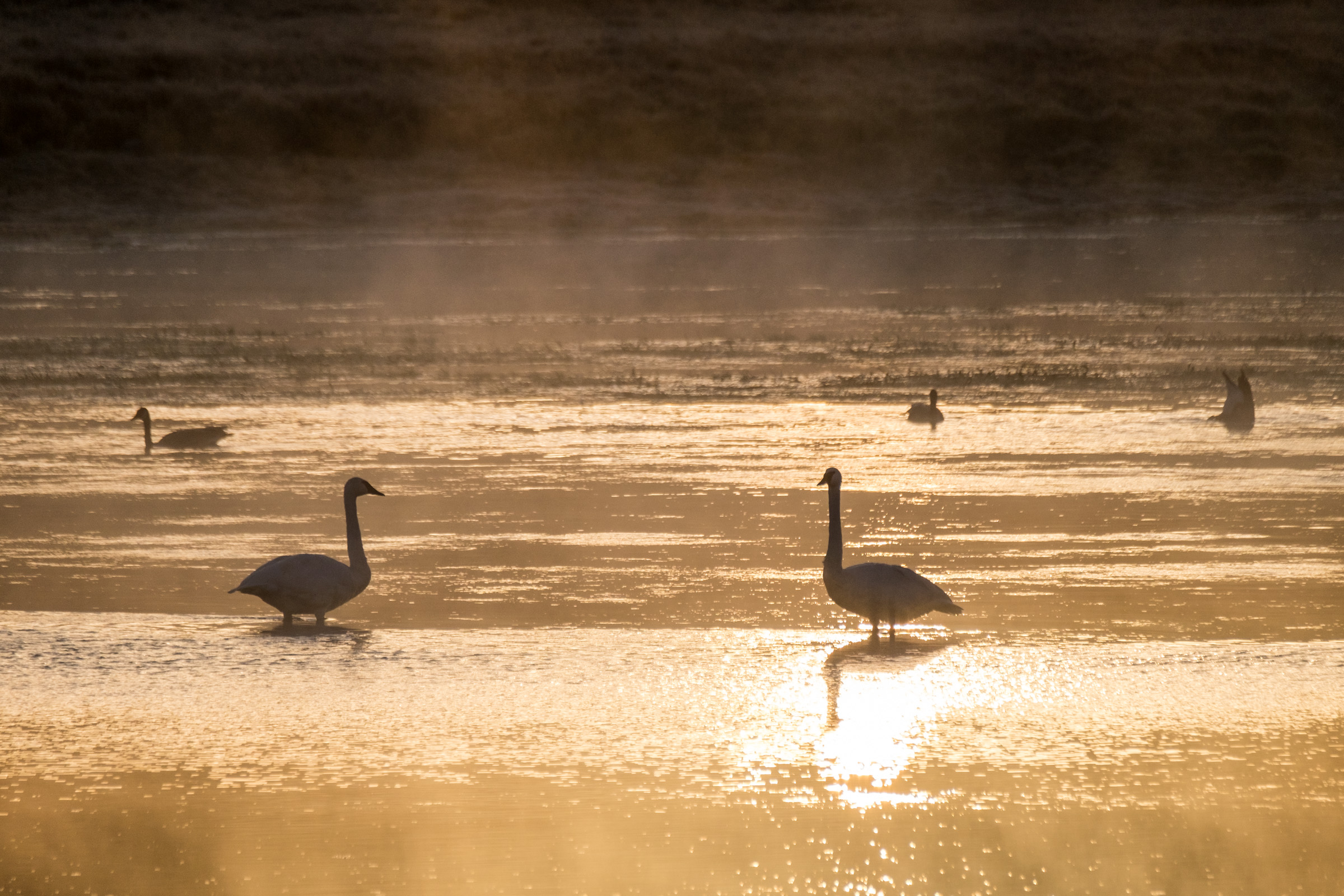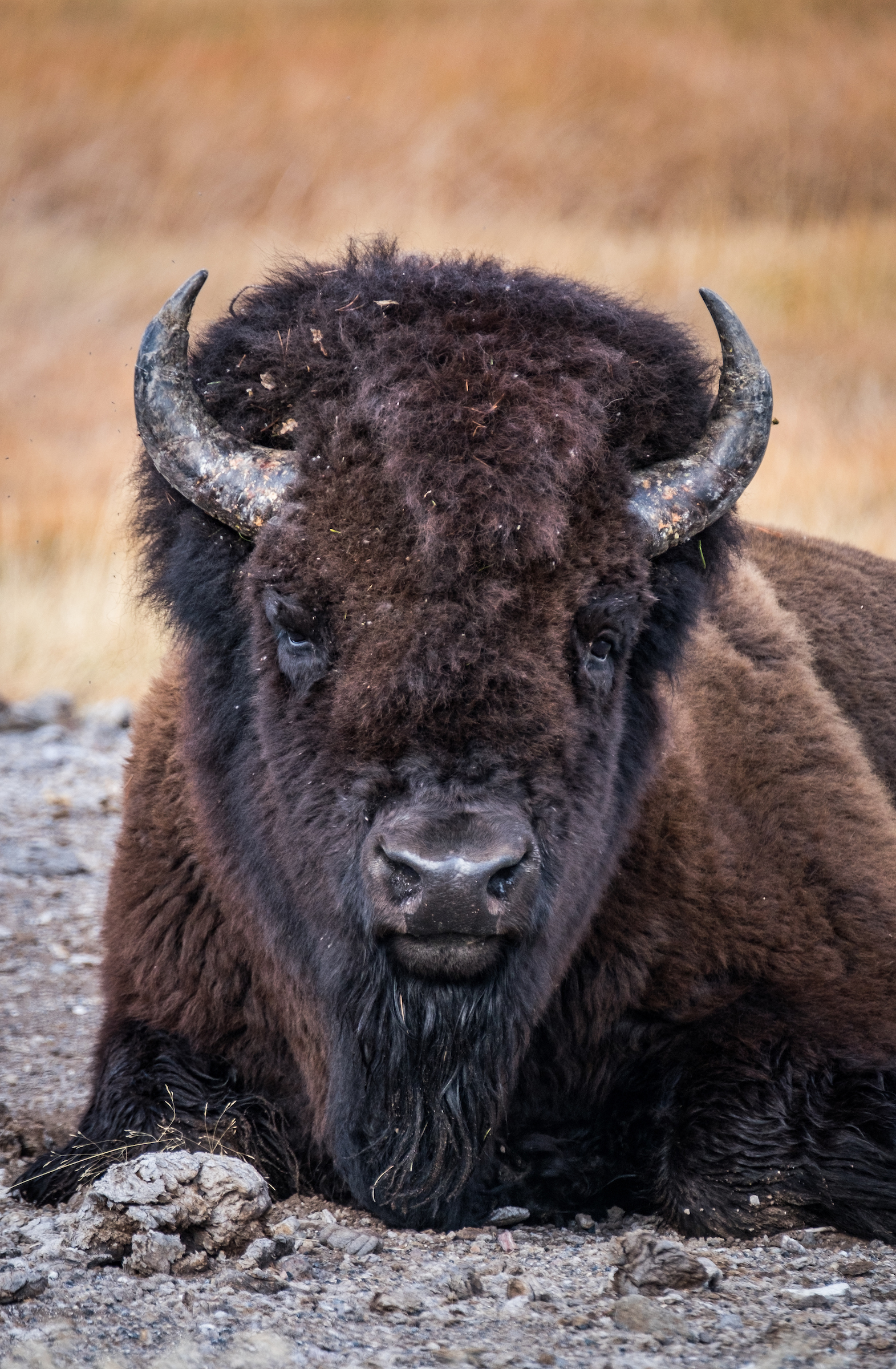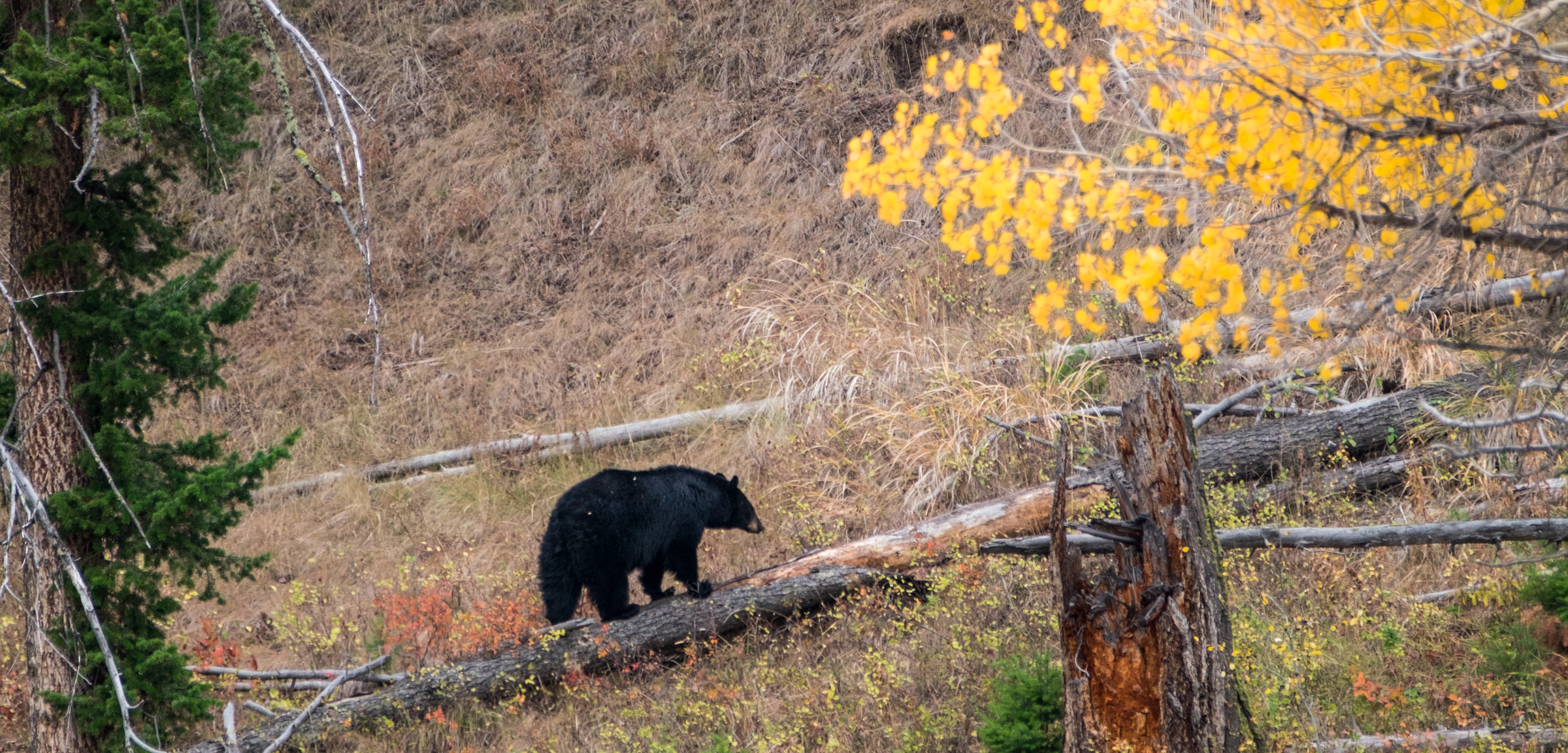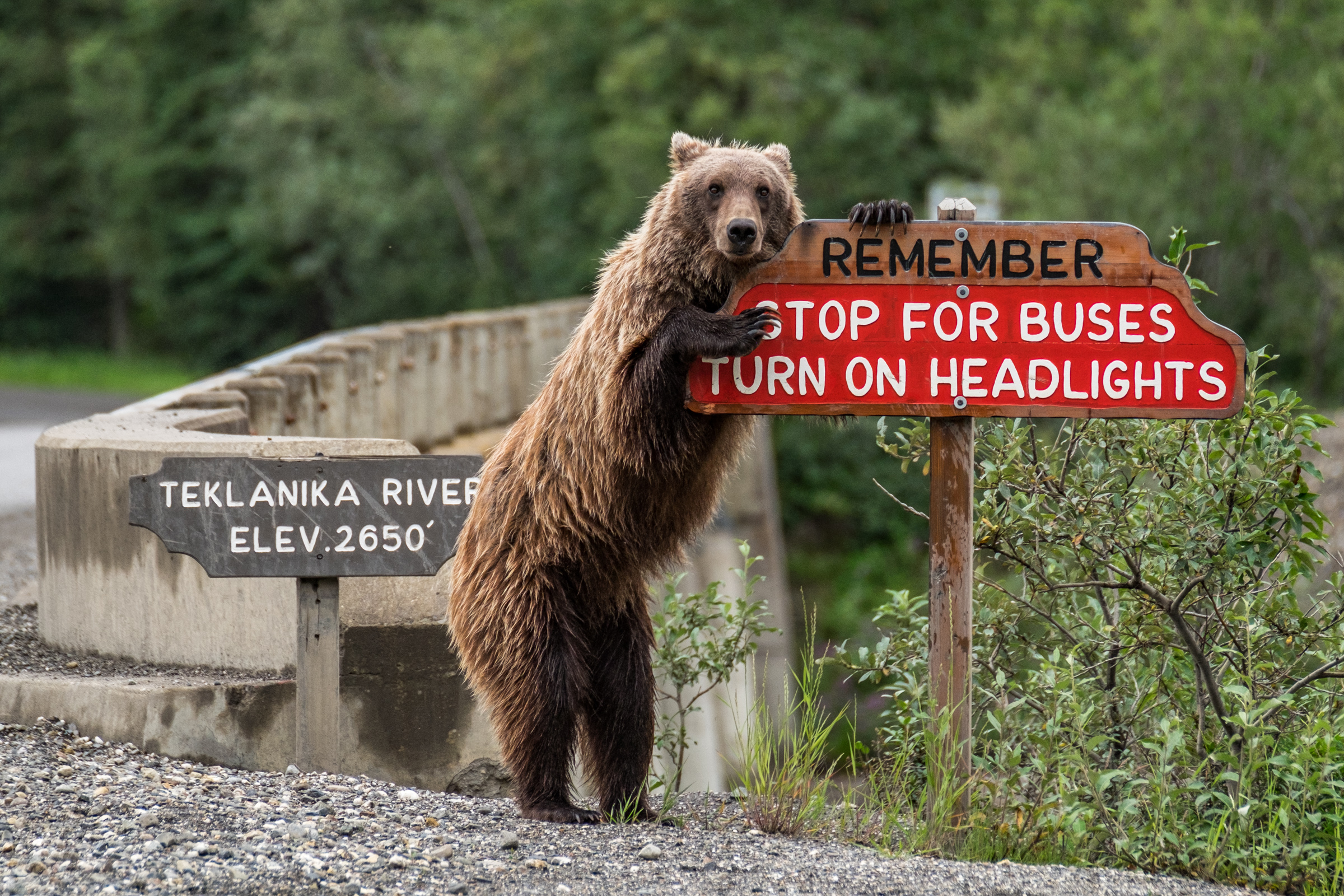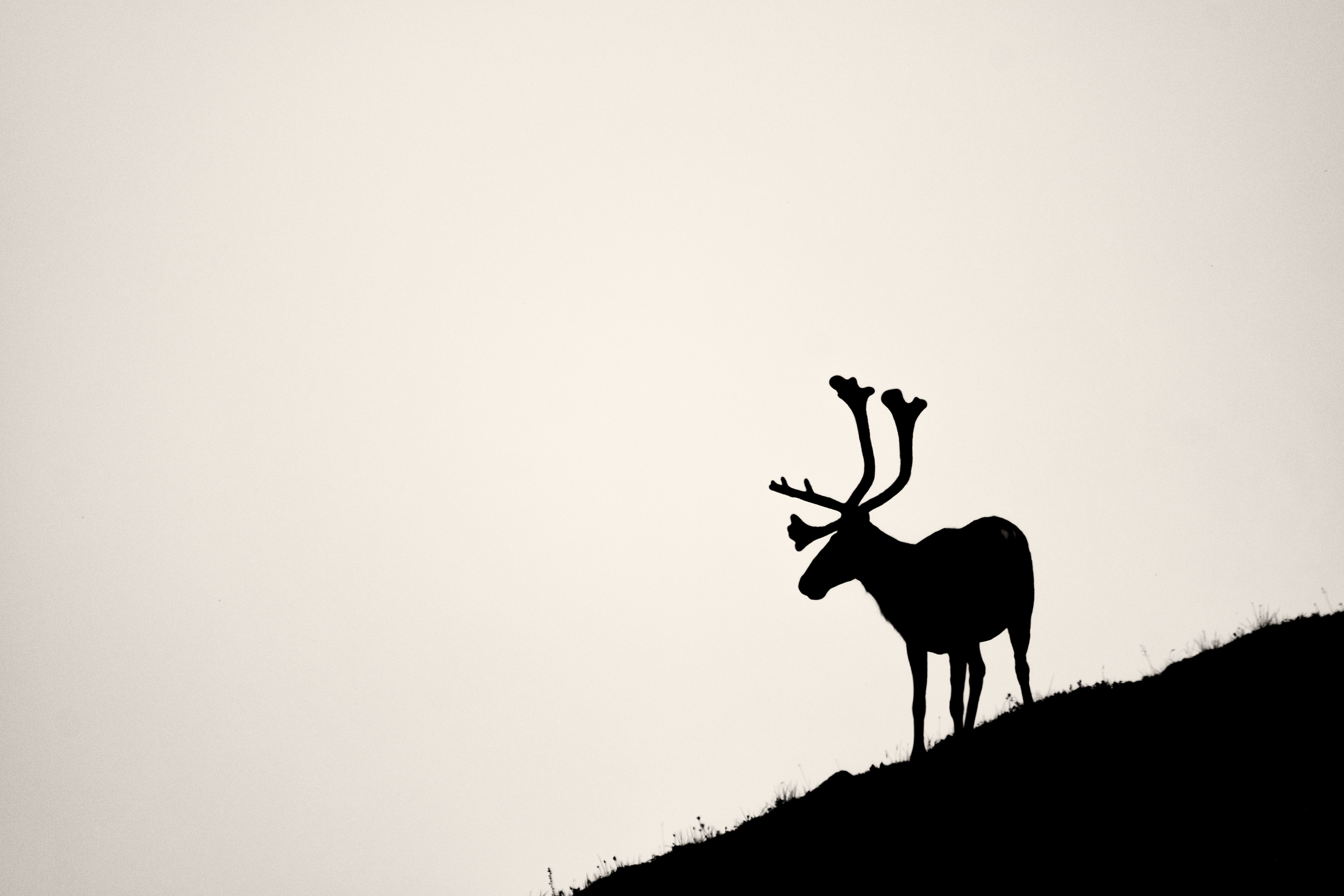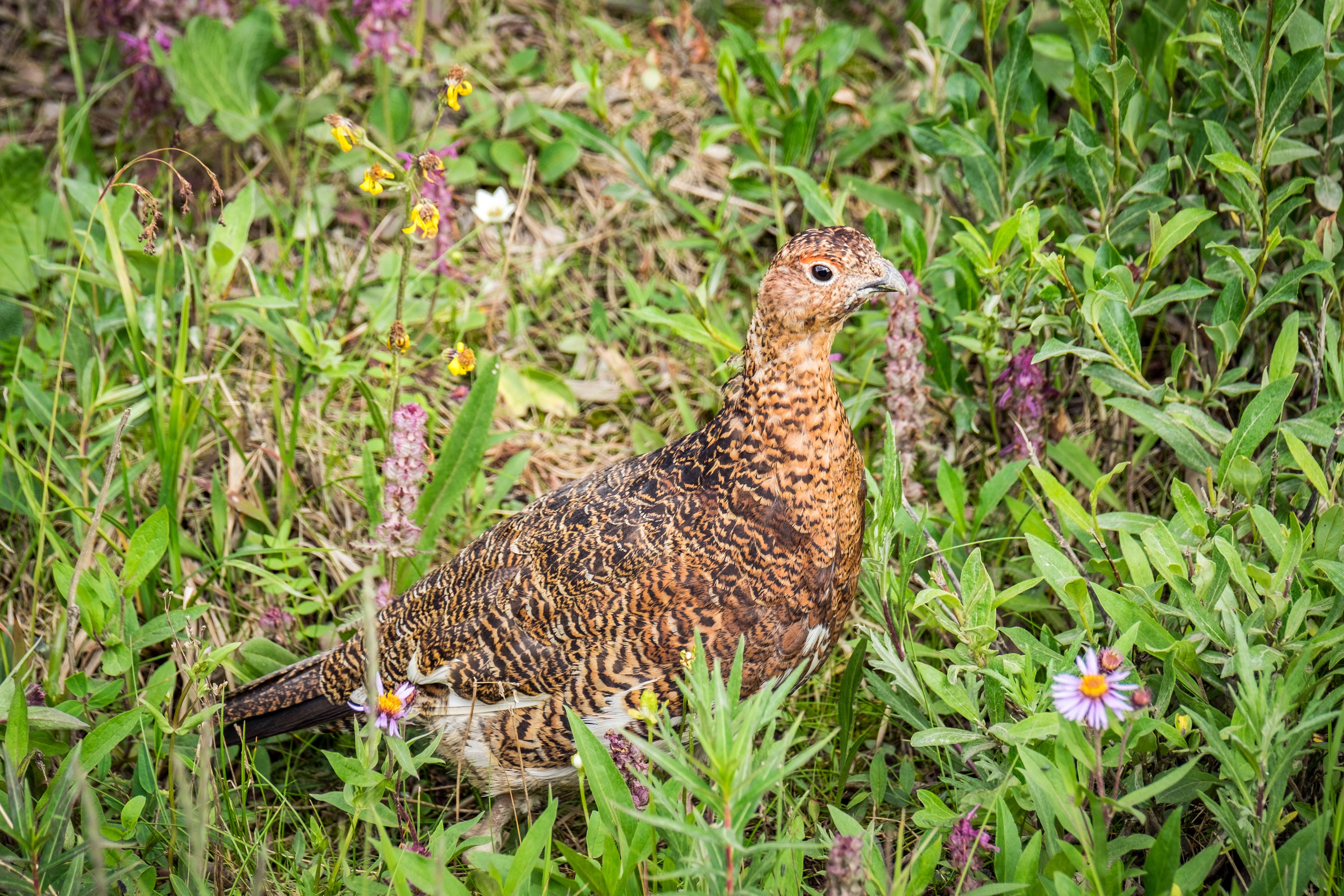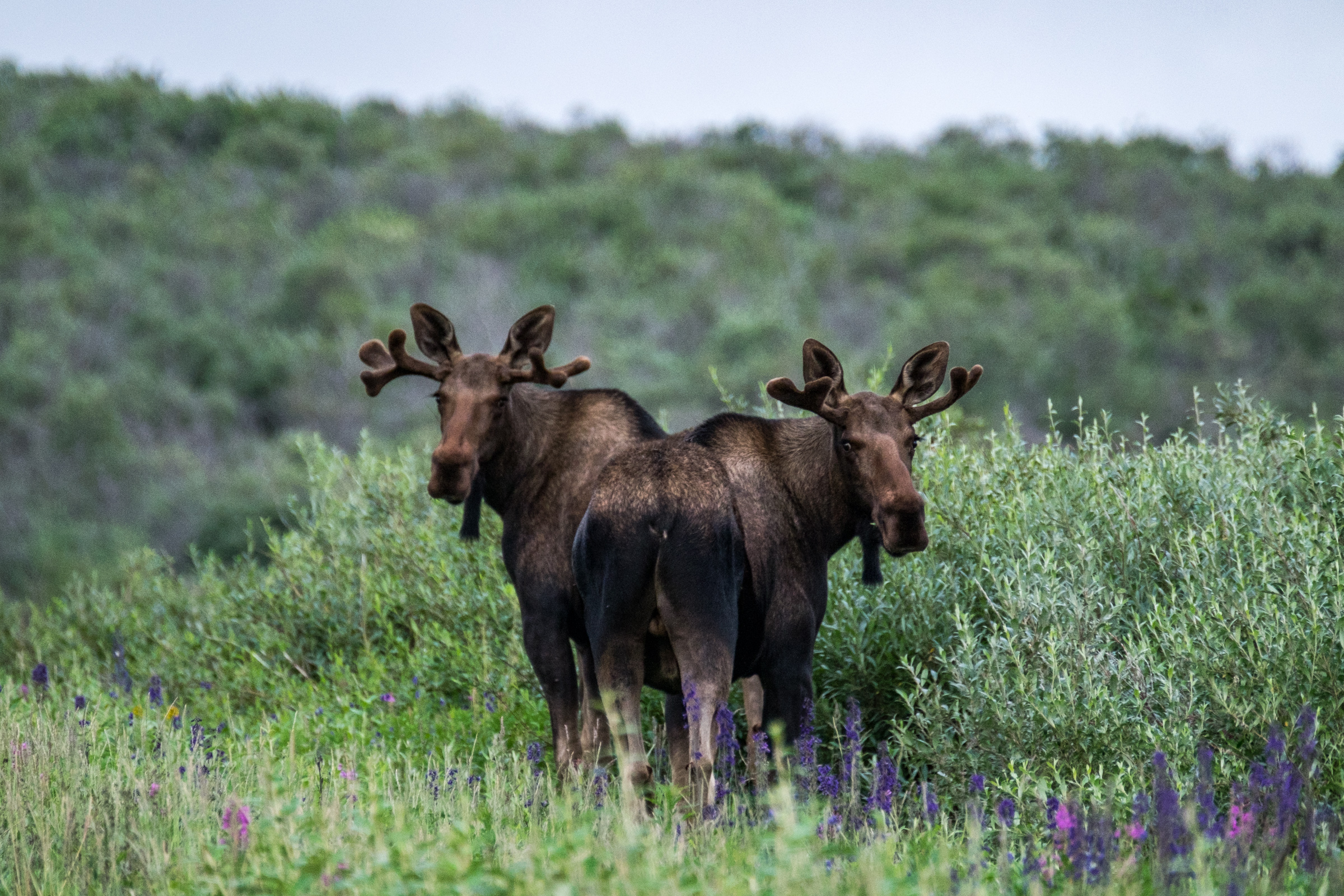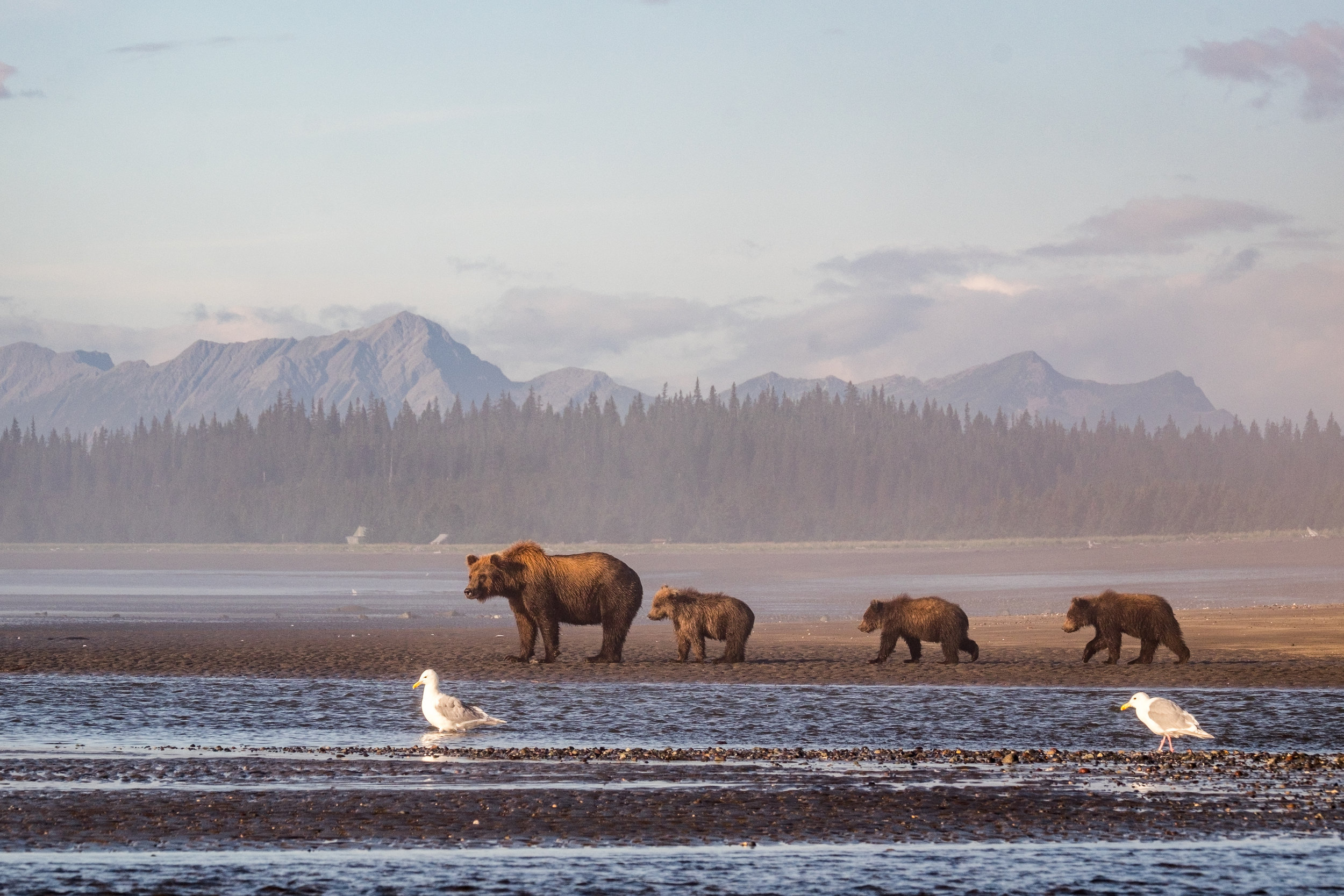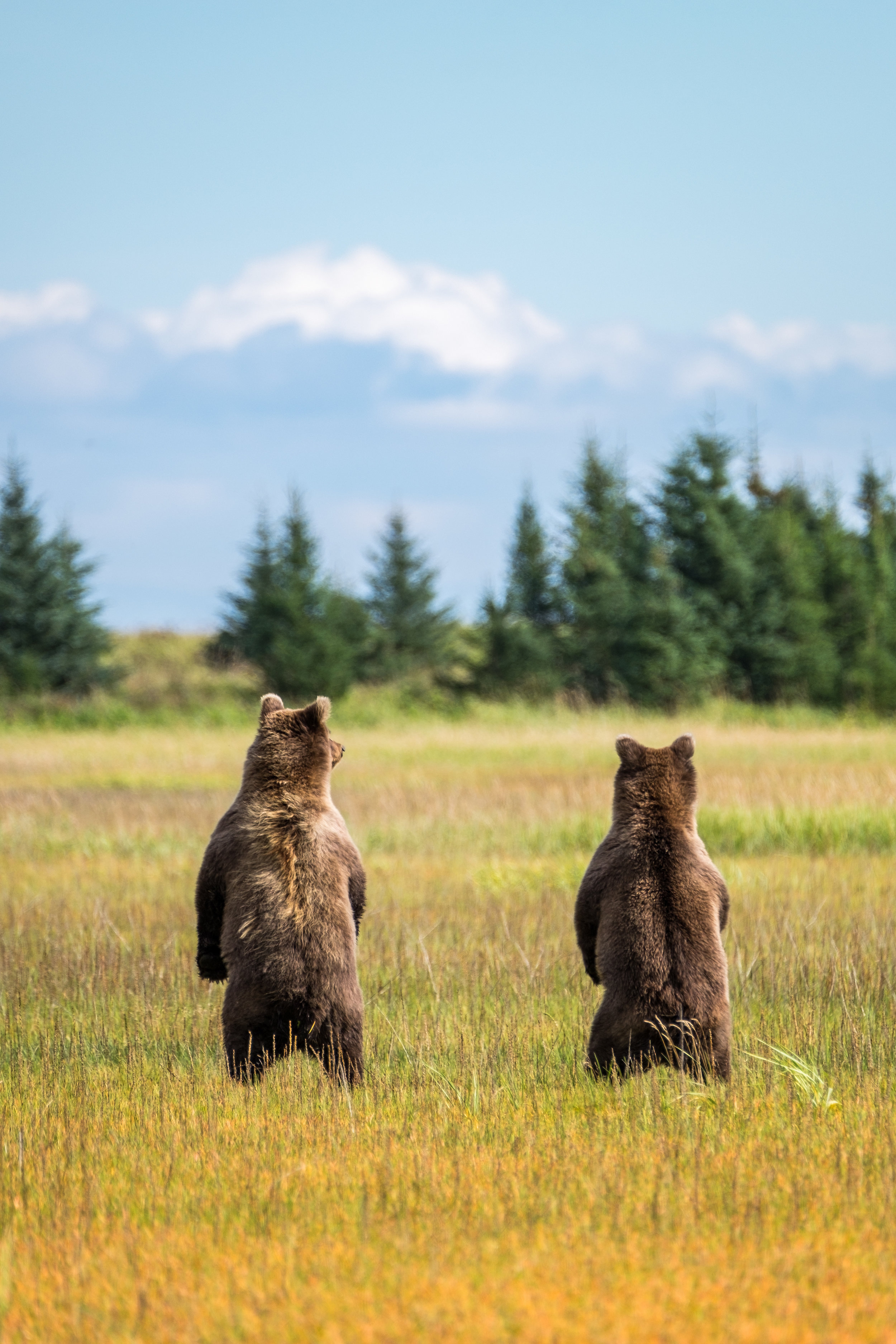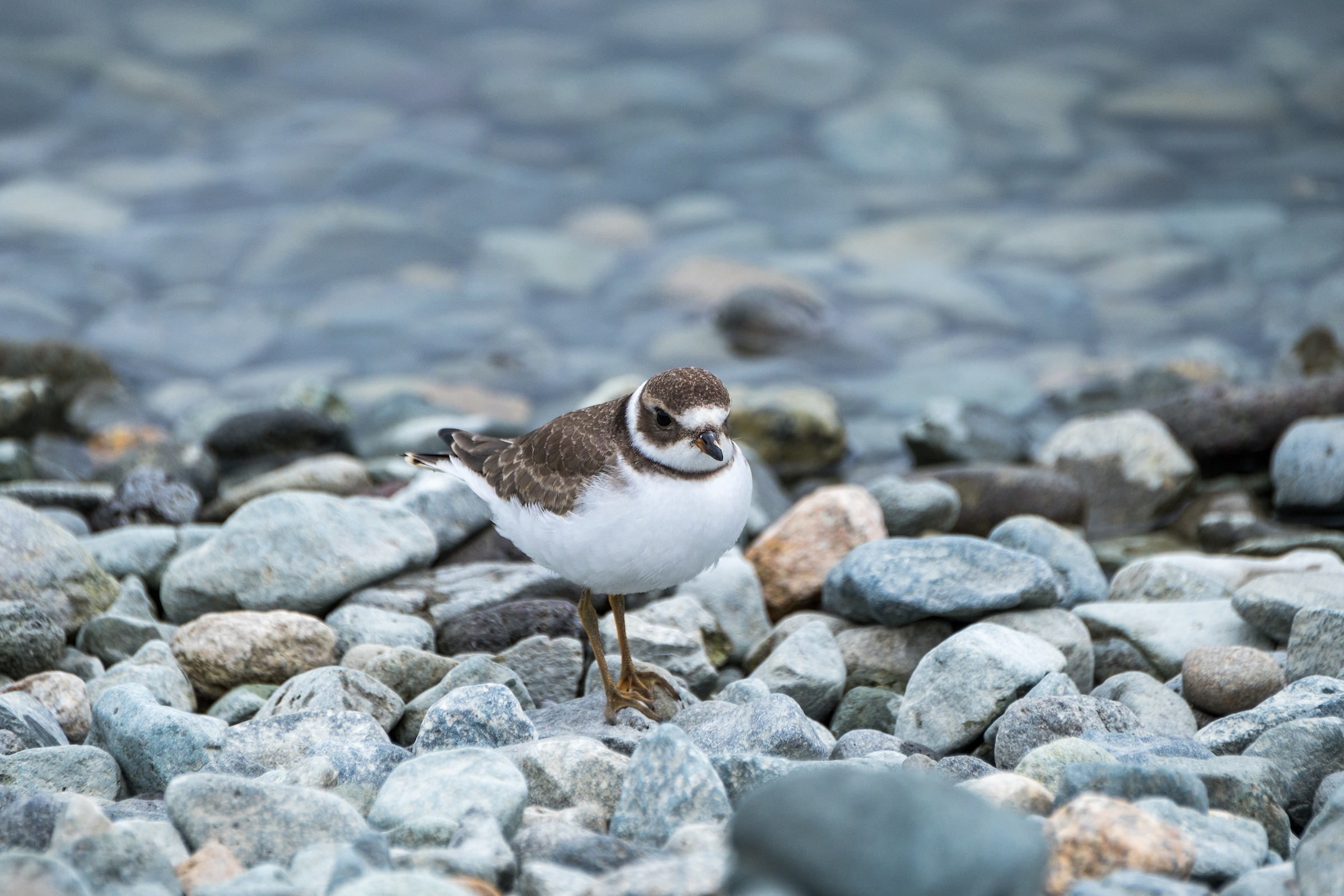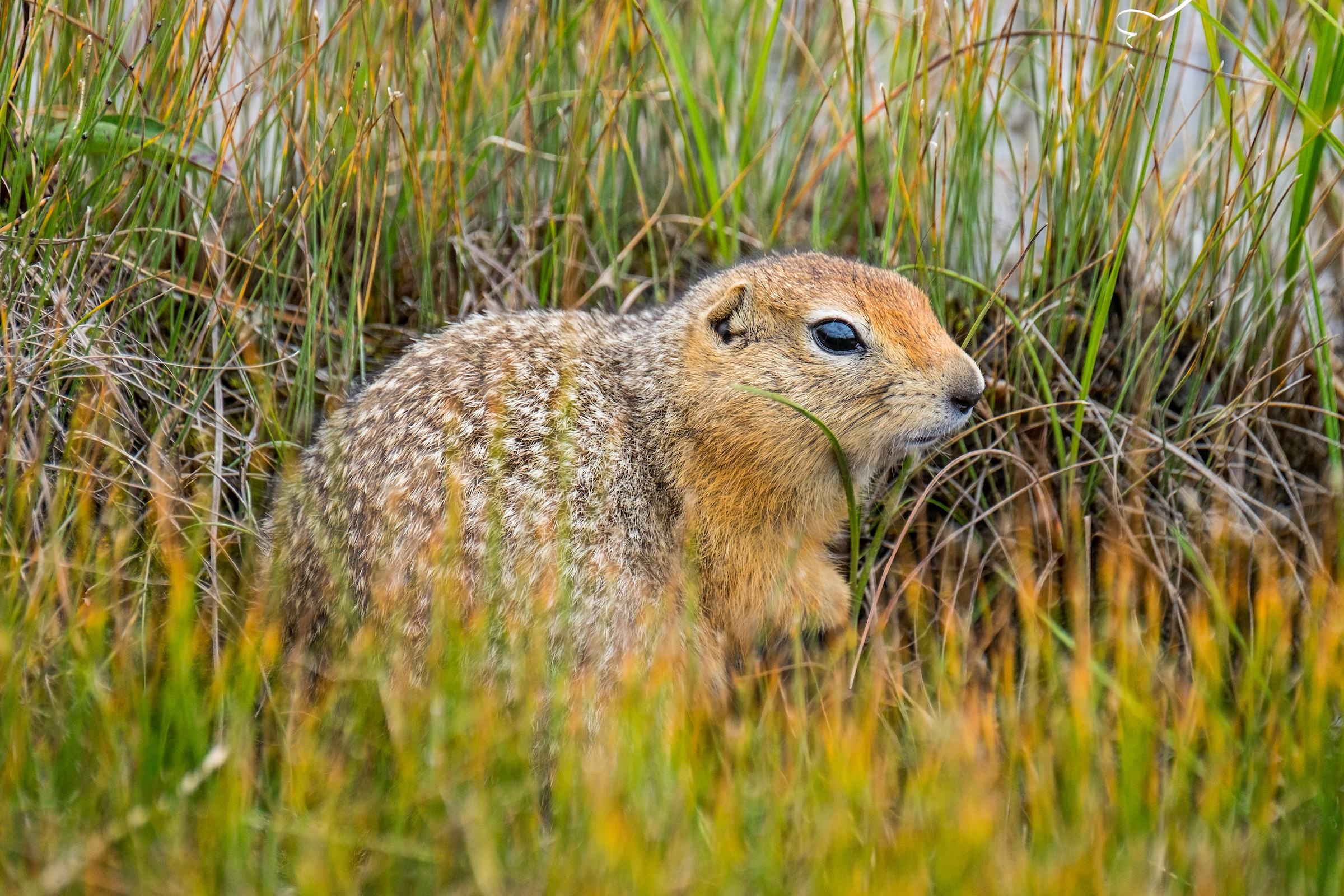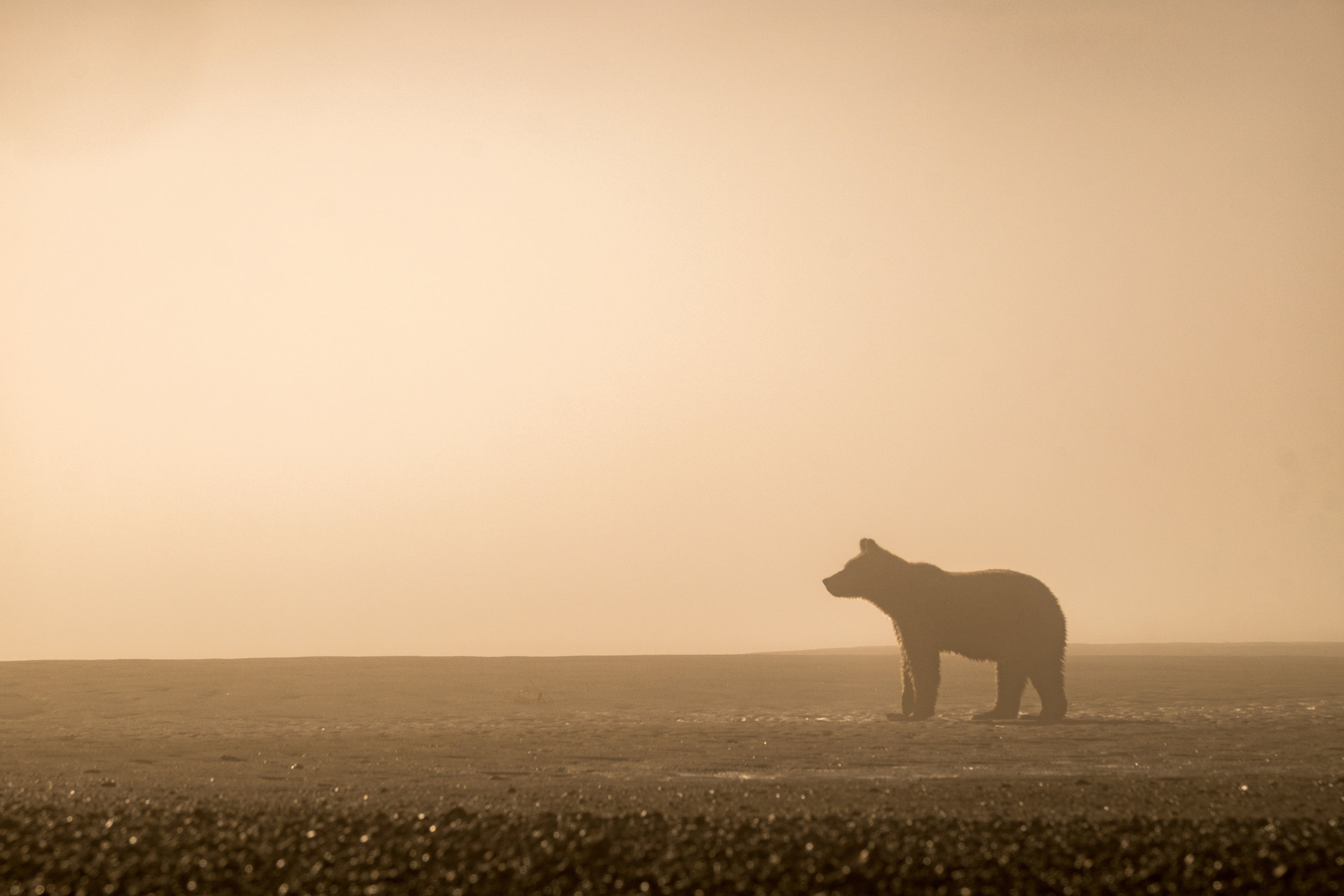From Grizzlies to Gators, America's National Parks Are Holding
First published on Red Bull's Red Bulletin.
WORDS: STEFANIE PAYNE
PHOTOGRAPHY: JONATHAN IRISH
In 2016, we visited every every U.S. National Park — 59 parks in 52 weeks — on a quest to explore and document the unique characteristics of America’s wilderness that have, over the course of a century, earned federal protection. These parks are the best places in the nation to encounter animals in their natural habitats. So out of all 59, here’s the best-of-the-best wildlife viewing parks that make journeying into the backcountry that much more exciting.
This is one of those fantastic sleeper parks that’s home to a world of wildlife that make a healthy and happy home on the American prairie. Black-tailed prairie dogs pop out of holes in “towns,” howling as they alert their mates of predators - such as coyotes, which can be found everywhere on the landscape. American bison, deer and pronghorn are easy to spot. As are elk, who travel in large herds but tend to scatter in the presence of humans since this area has long been a big-game hunting ground. Perhaps the greatest draw to the park in terms of animals are wild horses, which are protected as a cultural resource.
Driving the 36-mile paved road, you’ll wind through beautifully colorful badland formations and areas of dense vegetation interspersed with sprawling grasslands - a most unusual landscape collective. When the park was established in the 1940s, many native species of animals were rare or displaced from the region. Through reintroduction efforts over the last 50 years, wildlife populations continue to grow each year as the original ecosystem returns.
The allure of the Virgin Islands as a tropical paradise comes from the clear, blue ocean - where giant sea turtles glide through the turquoise Caribbean sea and sting rays skate the sandy ocean bottom. The coral reefs in the area are home to more than 300 species of tropical fish that dance in front of the GoPro strapped to your PFD. The park has even preserved an underwater trail complete with markers that help guide snorkelers to important oceanic wildlife locations.
On land, butterflies flutter, lizards scale ancient sugar cane plantations’ walls and 144 species of birds watch over from above. This U.S. territory off the southeast coast of Florida offers one of the best samplings of marine and terrestrial wildlife, born into the nutrient rich waters where the Atlantic and Caribbean converge.
If you want to get to know the rugged American west, Big Bend National Park in Texas is your jam. Next to the Rio Grande River on the border of Mexico, the wildlife of the Chihuahuan Desert knows no boundaries. Species unique to this area of the world captivate and transcend park visitors. Looney Tunes cartoons spring into mind as roadrunners scamper across the rugged dirt roads. Chuckwalla lizards scurry among the crevices, coyotes trot the landscape and, at the higher elevations, black bears live in the trees. Ringtail, bobcat, deer, jackrabbits and many other species prove that a water source hides somewhere in the desert. And no trip to the American west could be complete without the flight of the raven - the native American symbol for magic - soaring through the canyon walls above the desert landscape.
Welcome to the bird mecca! The Everglades are an aquatic park that was the first of its kind in the NPS - one devoted to water, and the birds and animals who make their homes there. Here, the salty ocean and fresh inland water sources converge creating an environment where all kinds of wildlife flourish - especially birdlife. Pelicans, roseate spoonbills, flamingo, egrets, heron - wading birds, flying birds, hydro-dynamic birds - abound in habitats of mangrove trees and sandbars, both on the shores and in the skies. Beyond the birdlife, there’s manatees, saltwater raccoons, opossums, amphibians, insect, snakes, grey fox, deer and, of course, the Florida alligator.
Glacier Bay is renowned for the marine wildlife that lives in and around Bartlett Cove. On the water you’ll witness sea otters, harbor seals, porpoises and a variety of whale species, the star being the Humpback that congregate here each summer to feed after breeding and calving in Mexico and Hawaii. Park rangers consider the Humpback to be the unofficial park mascot. On land you will see porcupine, black bear and grizzly bears. And in the sky, there’s the beautiful American bald eagle, which locals call “Alaskan pigeons” since they’re so common in the region.
No point inside of the park is located farther than 30 miles from biodiverse waters that intertwine land mammals and aquatic species. While walking on land, you’re viewing wildlife in the water. When paddling the icy blue coves, you’re spotting animals on the shore. Virtually everywhere you go in this national park you’re surrounded by wildlife.
Not to be confused with Glacier Bay in Alaska (above), this park was established in 1910 and is home to a vast number of thriving species who’ve enjoyed more than 100 years of protection. In pockets of the dramatic mountains, lynx, wolverine, mountain goats, mountain lions, wolves, elk, moose, big horn sheep and, of course, grizzly bears roam the landscape. This area in northern Montana has one of the highest grizzly populations in the lower 48 and they’re one of the major draws to the park.
One reason that the grizzly bear population remains strong in Glacier is that the park shares a northern border with Canada’s Waterton Lakes National Park allowing a larger area for wildlife to roam freely without boundaries. Together, these two parks form the world’s first “International Peace Park,” a joint effort in the preservation of a shared wild ecosystem - one where large fish populations inhabit rivers and streams, and where more than 260 bird species soar above one of the most beautiful landscapes on the planet.
Colorado’s gateway to the sky is Rocky Mountain National Park. Home to a wide variety of wildlife, none are more expressive than the elk who bugle their way through rut every fall. (“Rut” is the term used for mating season among ruminant animals like deer, camel, antelope, etc.) The male displays of dominance over their harems and melodic calls are so fascinating that the event has earned the nickname “Elktober.”
While elk are the star of the show at Rocky Mountain each fall, there are plenty of other species to captivate visitors 24/7/365. Moose, deer, Bighorn sheep and coyotes can be seen across the vast meadows from dawn ’til dusk, as can small animals like marmot, pika, chipmunks and squirrels. You’re less likely to see black bear and mountain lion, but they’re out there. Count on racking up your birdlife-list with more than 270 species recorded to be either residents or migrators of the park.
America’s first national park, established in 1872 in an effort to preserve its enormous wildlife populations. Today, wildlife continues to thrive and that’s the number one reason that more than three million visitors plan trips here each year. The park’s well-mapped and paved roads make spotting animals that much easier as you auto-tour sections of the two-million-acre wilderness.
For those comfortable with outdoor exploration, wandering off on foot in the backcountry provides superb opportunities to see animals that are more elusive. Over the course of a century, many species who prefer to be left alone have discovered that roads equate to people. Traveling the expansive landscape on foot, you can spot black bear, grizzly bear, wolves, lynx, coyotes, wolverines and mountain lions. Plus, there’s the ungulate species that they prey on such as white-tailed deer, mule deer, pronghorn, mountain goats, elk, moose and bison — the last of which is prominently displayed on the National Park Service arrowhead logo insignia as a representation of all American wildlife. Not only does Yellowstone have the highest population of wildlife in the contiguous 48, it also allows guests to witness the vital predator-prey relationships that persist and impact the greater ecosystem inside the park and beyond.
While Denali is best known as a place for mountaineers yearning to experience “The High One,” the national park was originally established to protect an immense population of wildlife. Denali (formerly Mt. McKinley National Park) is home to countless species of animals, rightfully earning its comparison to an African safari. These are America’s Big 5: grizzly bear, moose, wolf, caribou and Dall sheep.
You can find moose in the lowlands, along with ptarmigan (the state bird of Alaska), the elusive lynx, the arctic ground squirrel, the snowshoe hare and the red fox. A more populous concentration of grizzly bears live at higher elevations with dense blueberry bushels and sedge grasses to feast on while anticipating the occasional lost moose or caribou calf away from its brood. At the highest elevations, you’ll find Dall sheep and caribou, who each find their way to mountain hillsides where bears’ hunting behaviors are more challenged. And finally, wolves — the most elusive animal of all American wildlife have a rather large population in Denali, making it one of the best places to see the fabled creature in its wild environment. While you wait for that sighting, train your eyes to the sky where 160 bird species live, including the majestic golden eagle.
This is one of the least visited national parks due to its challenging-to-explore interior. However, it’s without a doubt one of the best places on Earth to interact with coastal brown bears. All summer long on the Cook Inlet, coastal brown bear sows, cubs and males walk the beaches in search of razor clams and other shellfish to beef up on calories before hibernation each fall. To wander among them in a safe way, you can team up with expert bear naturalists who have surveyed their behavior and activity seasonally for decades.
While Lake Clark is mecca for bear viewing, there are plenty of other animals to see in the four-million-acre wilderness stretching across southeastern Alaska. In the park interior, you’re in the home of large mammals such as moose, caribou, Dall sheep, wolves and smaller animals including porcupine and the beautiful red fox. The wildlife ecosystem extends to the waterways, of course, where 25 species of fish live. And soaring above the spectacular landscape are migratory birds that return to the area each summer to cash in on the ample food supply. But what cinched Lake Clark as our number one pick is the diversity and sheer number of sightings you’re all but guaranteed when visiting the park. It’s an incredibly wild place that’s full of life.



